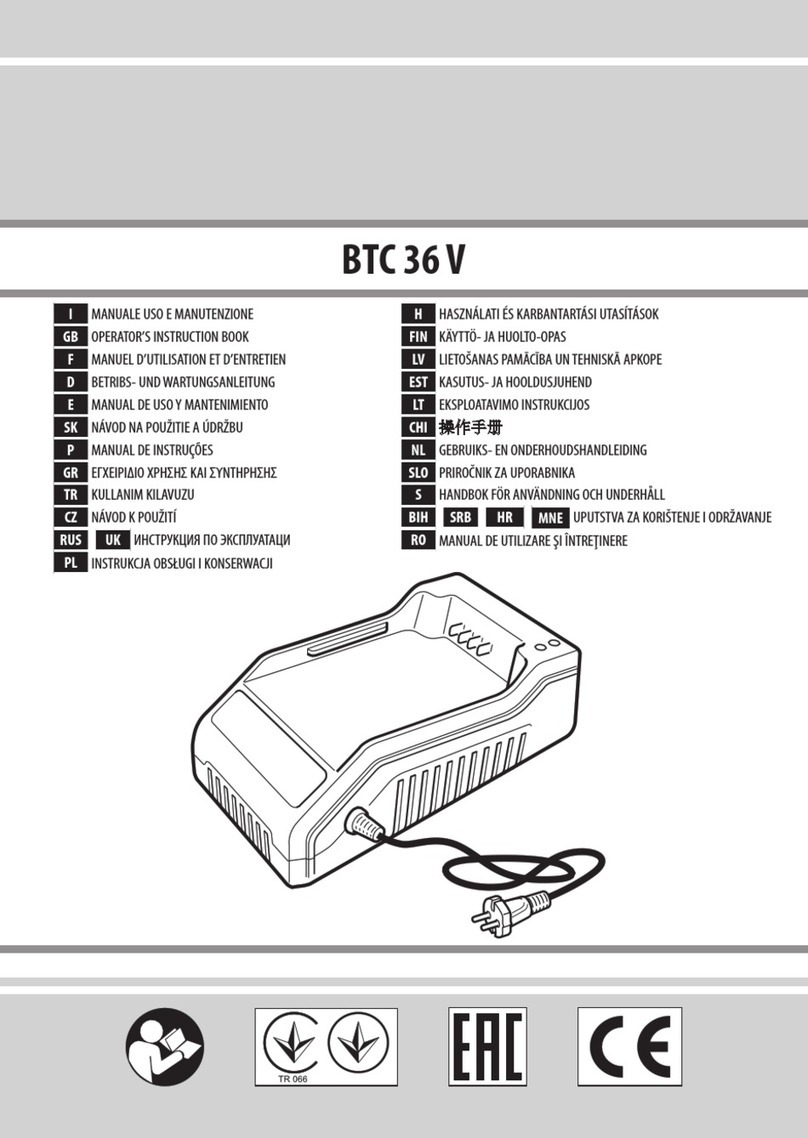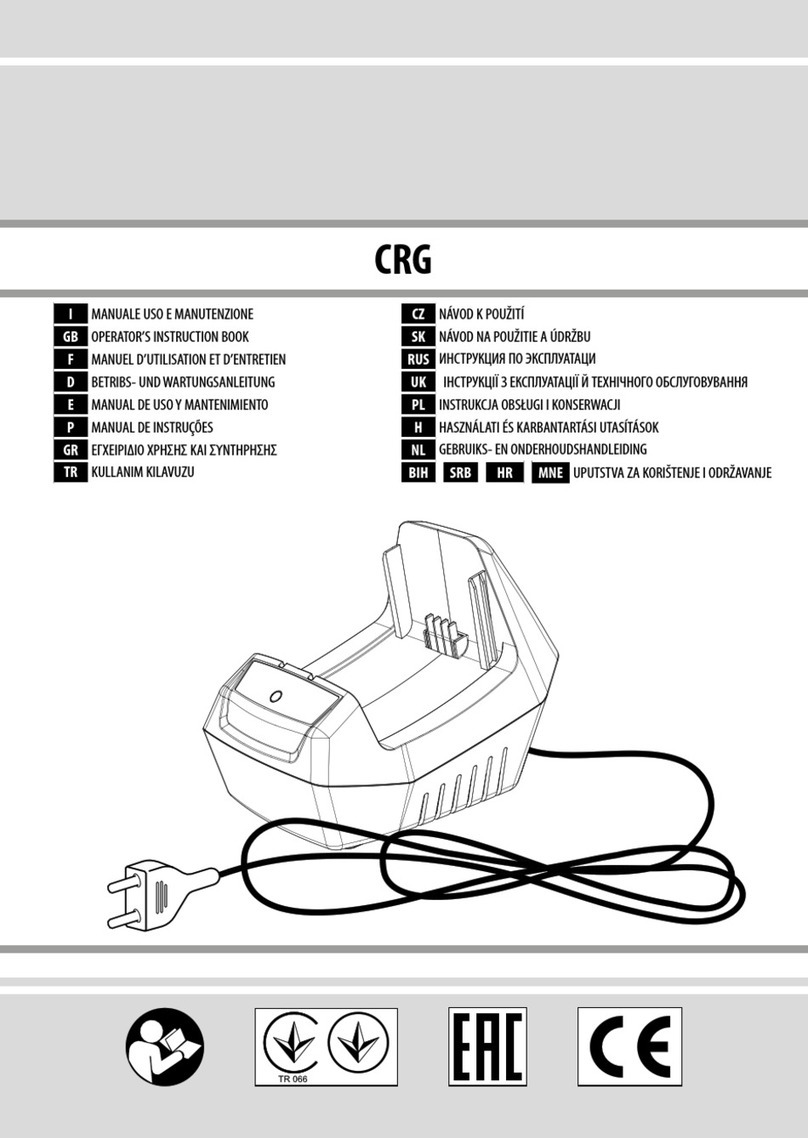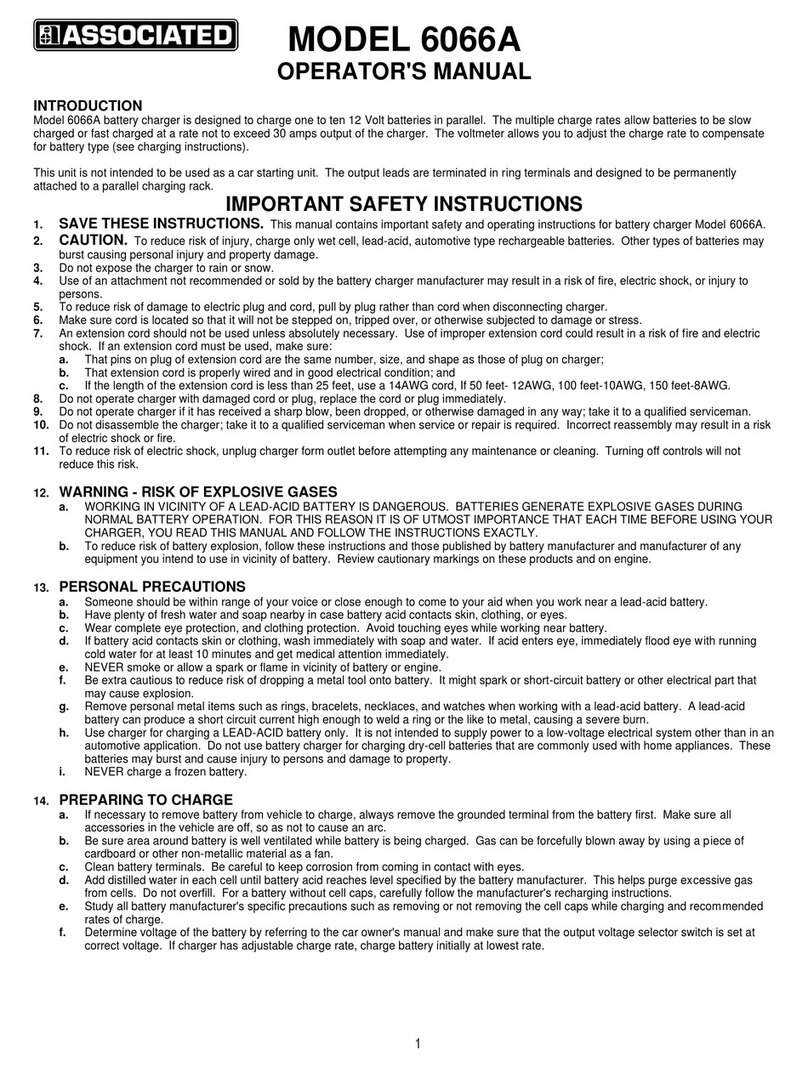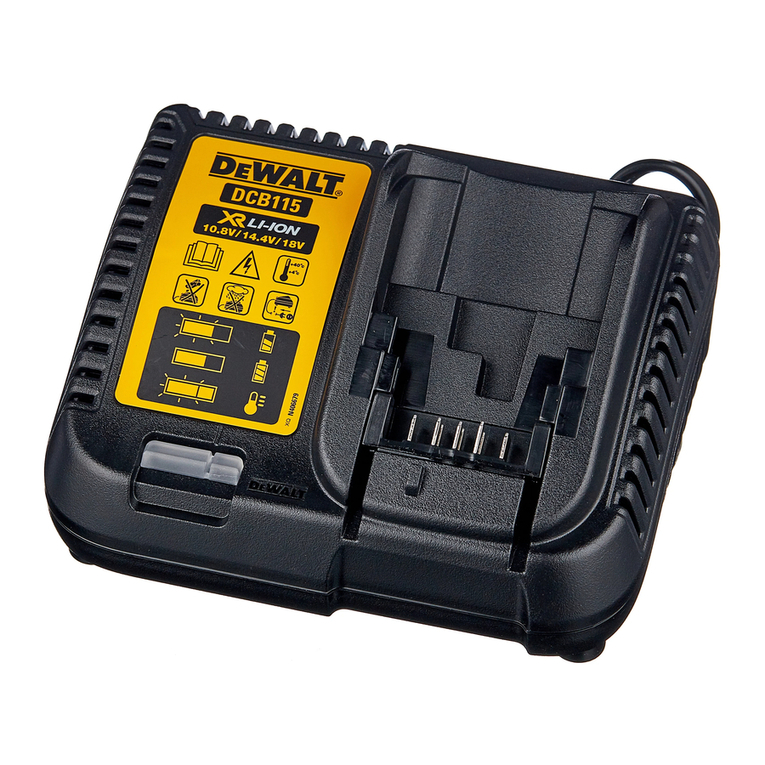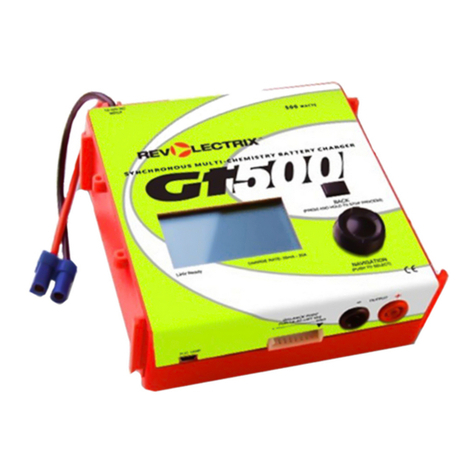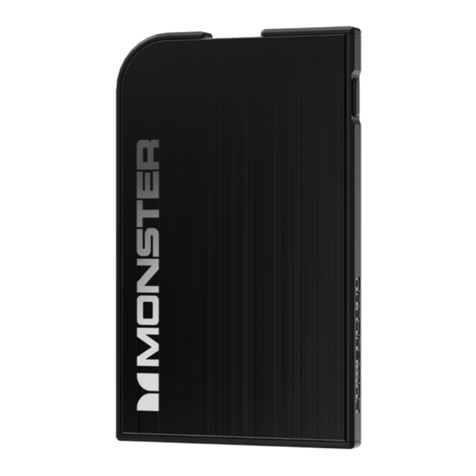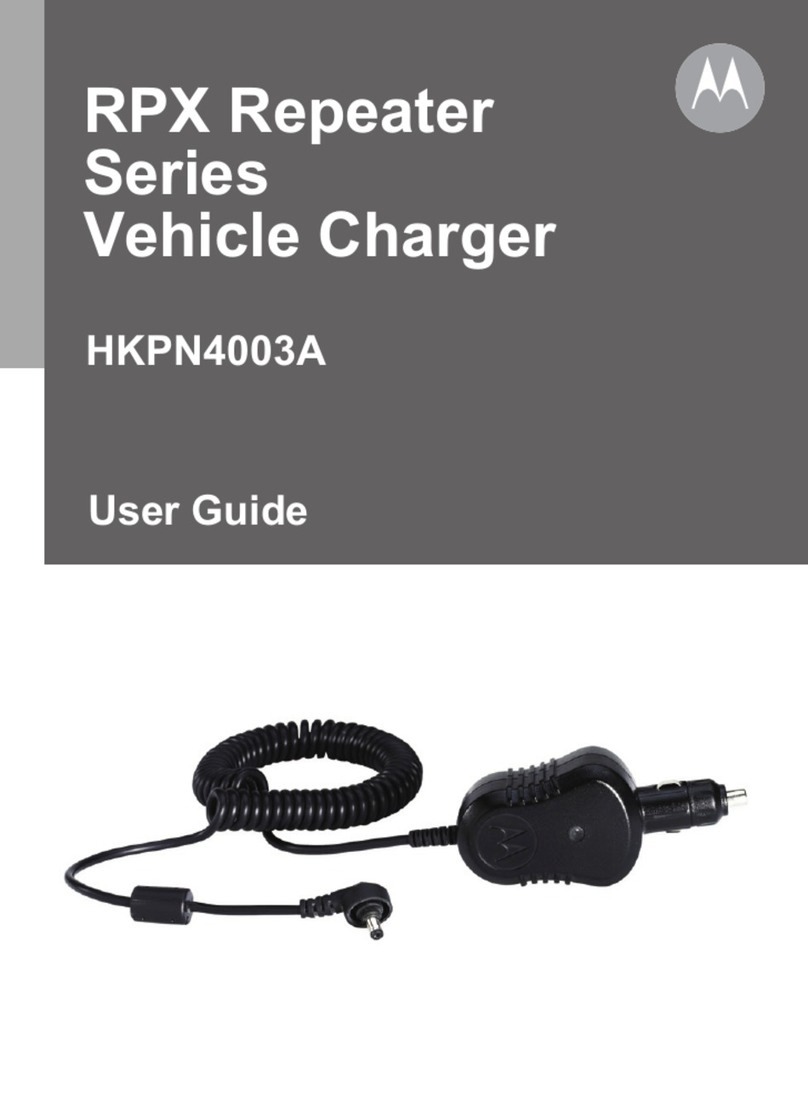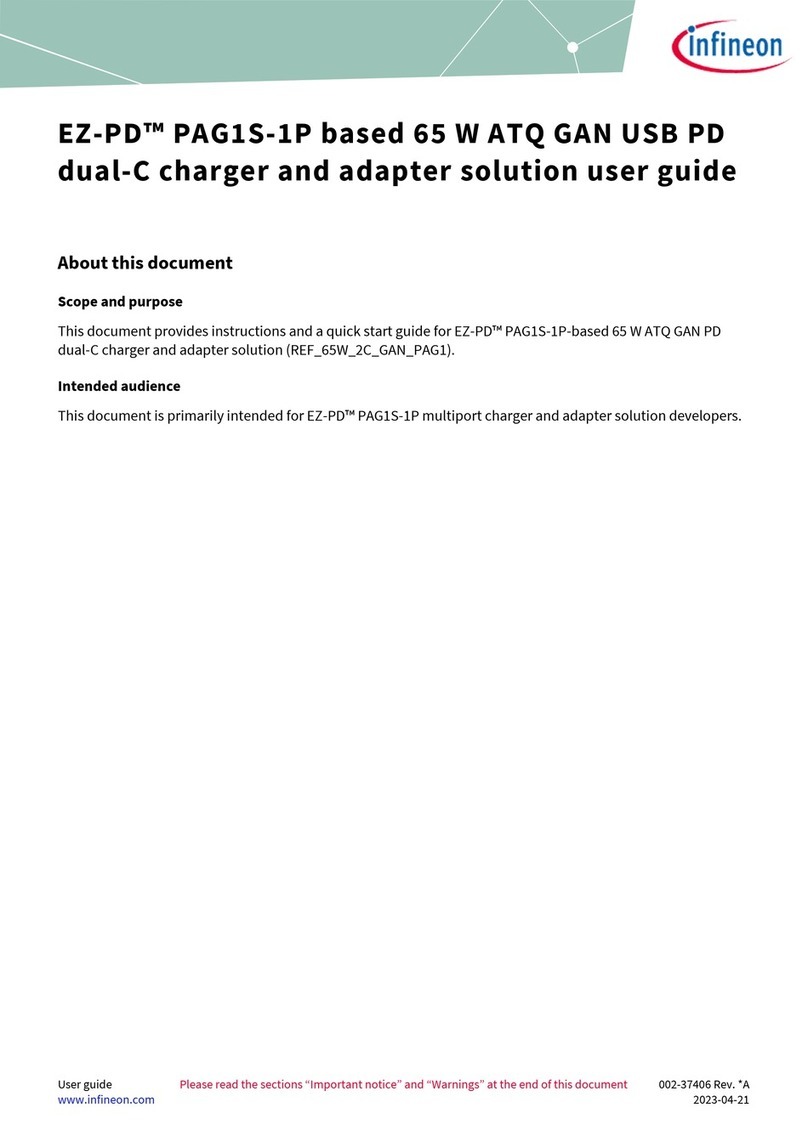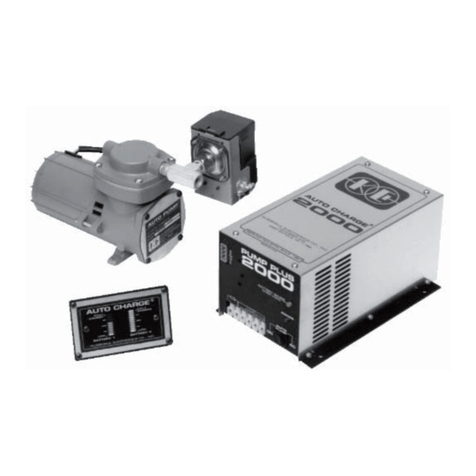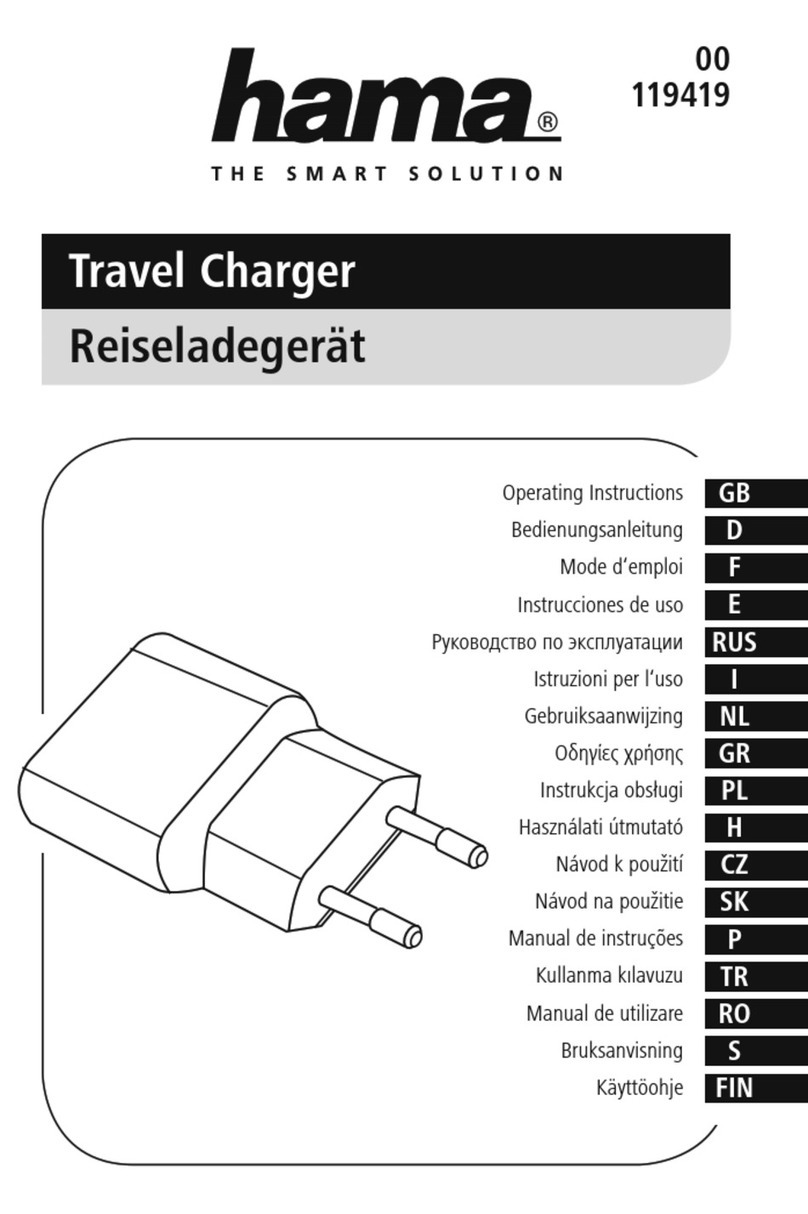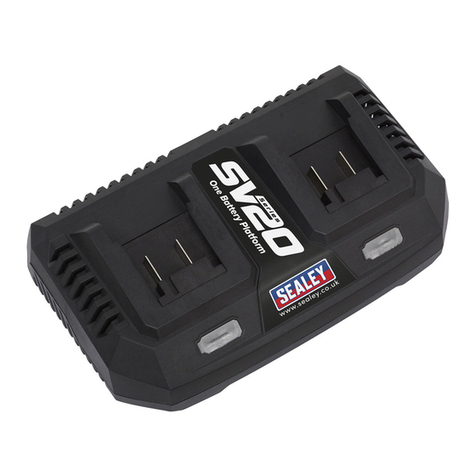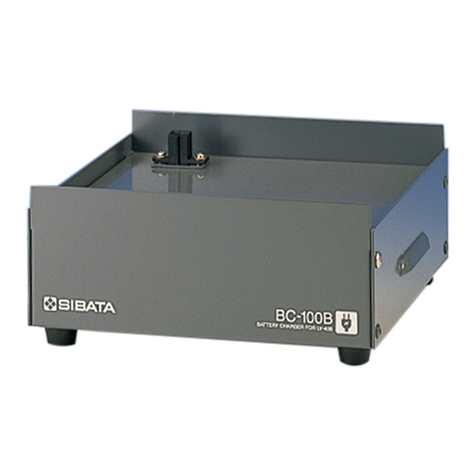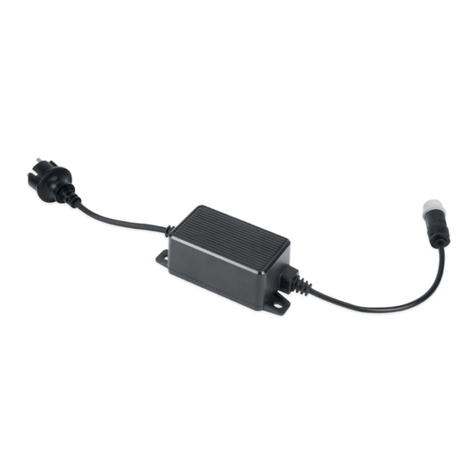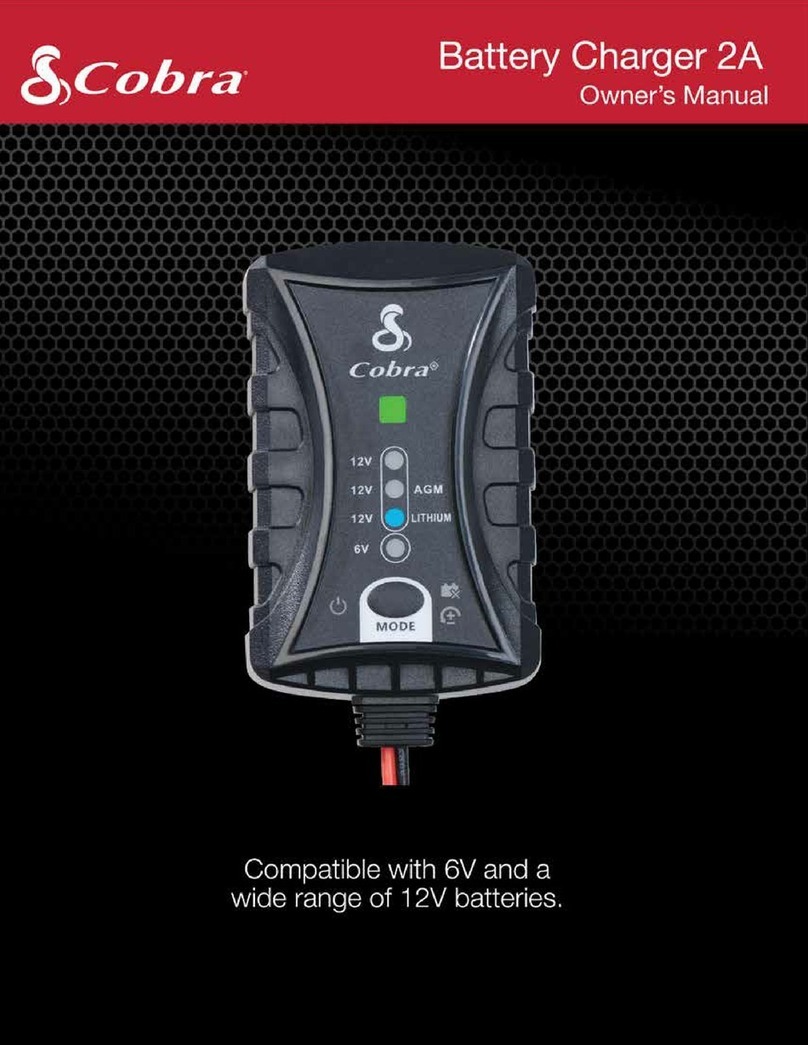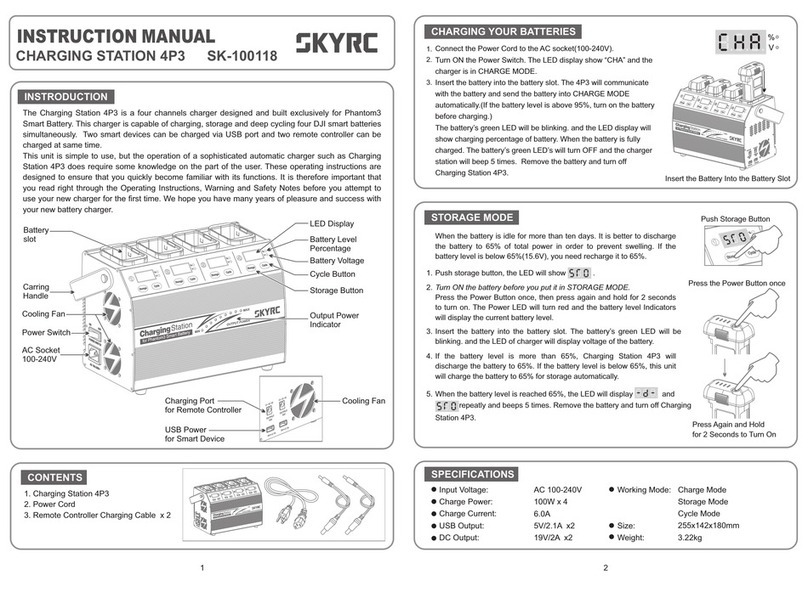EMAK T327 Manual

T327 XSG1262000EU - CH1262000EU
IMANUALE USO E MANUTENZIONE
GB OPERATOR’S INSTRUCTION BOOK
FMANUEL D’UTILISATION ET D’ENTRETIEN
DBETRIBS- UND WARTUNGSANLEITUNG
EMANUAL DE USOY MANTENIMIENTO
PMANUAL DE INSTRUÇÕES
GR ΕΓΧΕΙΡΙ∆ΙΟ ΧΡΗΣΗΣ ΚΑΙ ΣΥΝΤΗΡΗΣΗΣ
TR KULLANIM KILAVUZU
CZ NÁVOD K POUŽITÍ
SK NÁVOD NA POUŽITIE A ÚDRŽBU
RUS UA
PL INSTRUKCJA OBSŁUGI I KONSERWACJI
HHASZNÁLATI ÉS KARBANTARTÁSI UTASĺTÁSOK
NL GEBRUIKS- EN ONDERHOUDSHANDLEIDING
BIH SRB HR MNE UPUTSTVA ZA KORIŠTENJE I ODRŽAVANJE
FIN KÄYTTÖ- JA HUOLTO-OPAS
LV LIETOŠANAS PAMĀCĪBA UNTEHNISKĀ APKOPE
EST KASUTUS- JA HOOLDUSJUHEND
LT EKSPLOATAVIMO INSTRUKCIJOS
CHI 操作手册操作手册
SLO PRIROČNIK ZA UPORABNIKA
SHANDBOK FÖR ANVÄNDNING OCH UNDERHÅLL

1
F
D
E
H
I
2
MADE IN CHINA
DATE CODE:201808
SWITCHING POWER SUPPLY/CHARGER
MODEL:XXXXXXXXXXXX
INPUT:100-240V~50/60Hz 0.6A
OUTPUT:12.6V 2.0A
FULLY CHARGE GREEN 0.2A
L.P.S
v
1
4
2
3
5
7
6
8
3
4
Model: T327 Rechargeable Li-Ion Battery
10.8V DC Nominal 1.5Ah / 16.2Wh 3INR19/65
Date Code: xxxxxxxx
Made in China
XXXXXXXXXX
RoHS
1
6
3
2
5
4
E
G
5
A
B
C

1
F
D
E
H
I
2
MADE IN CHINA
DATE CODE:201808
SWITCHING POWER SUPPLY/CHARGER
MODEL:XXXXXXXXXXXX
INPUT:100-240V~50/60Hz 0.6A
OUTPUT:12.6V 2.0A
FULLY CHARGE GREEN 0.2A
L.P.S
v
1
4
2
3
5
7
6
8
3
4
Model: T327 Rechargeable Li-Ion Battery
10.8V DC Nominal 1.5Ah / 16.2Wh 3INR19/65
Date Code: xxxxxxxx
Made in China
XXXXXXXXXX
RoHS
1
6
3
2
5
4
E
G
5
A
B
C


5
Italiano 6
English 10
Français 14
Deutsch 18
Español 22
Português 26
Ελληνικα 30
Türkçe 34
Česky 38
Slovensky 42
Pуccкий 46
Polski 50
Magyar 54
Nederlands 58
Hrvatski 62
Suomi 66
Latviski 70
Eesti keel 74
Lietuvių k. 87
中文中文 82
Slovenščina 86
Svenska 90

6
IISTRUZIONIORIGINALI
SPIEGAZIONE SIMBOLI E AVVERTENZE DI SICUREZZA DEL
CARICABATTERIE (Fig.1)
1) Utilizzareesclusivamentel’apparecchioinambientichiusi
2) Frequenzaetensionedialimentazione
3) Tensione ecorrentedelcaricabatteria
4) Dispositivoadoppio isolamento
5) Tipodimacchina:CARICABATTERIA.
6) MarchioCEdiconformità.
7) Annodifabbricazione
8) INFORMAZIONE AGLI UTENTI - Ai sensi delle Direttive 2011/65/
CE e 2012/19/CE, relative alla riduzione dell’uso di sostanze
pericolose nelle apparecchiature elettriche ed elettroniche,
nonchéallo smaltimento dei rifiuti.
Il simbolo del cassonetto barrato riportato sull’apparecchiatura indica che il
prodotto alla fine della propria vita utile deve essere raccolto separatamente
daglialtri rifiuti.
L’utente dovrà, pertanto, conferire l’apparecchiatura giunta a fine vita
agli idonei centri di raccolta differenziata dei rifiuti elettronici ed elettrici,
oppure riconsegnarla al rivenditore al momento dell’acquisto di una nuova
apparecchiaturaditipo equivalente,in ragione di unoauno.
L’adeguata raccolta differenziata per l’avvio successivo dell’apparecchiatura
dismessa al riciclaggio, al trattamento e allo smaltimento ambientalmente
compatibile contribuisce ad evitare possibili effetti negativi sull’ambiente
e sulla salute e favorisce il riciclo dei materiali di cui è composta
l’apparecchiatura.
Lo smaltimento abusivo del prodotto da parte dell’utente comporta
l’applicazionedellesanzioniprevistedallalegislazionenazionale.
NORMEDI SICUREZZA DELCARICABATTERIE(Fig.2)
1) Per caricare le batterie usare esclusivamente i caricabatterie
raccomandati dal costruttore. Un caricabatteria progettato per un
determinato tipo di batterie può causare rischi di incendio se viene
usatoconaltritipi di batterie.
2) Nontentaremaidiricaricarebatterienonricaricabili.
3) In caso di uso scorretto può fuoriuscire del liquido dalla batteria. Evitare
il contatto con il fluido. In caso di contatto accidentale, lavare la zona
interessata con acqua. Se il liquido viene a contatto con gli occhi,
rivolgersi inoltre a un medico. Il liquido che fuoriesce dalla batteria può
provocareirritazioni della pelle oustioni.
4) Controllare idatiriportati sullatarghettadel caricabatteria. Assicurarsidi
collegare il caricabatteria a una presa elettrica che abbia la stessa
tensione di rete indicata sulla targhetta dei dati tecnici. Non collegare
maiil caricabatteria a una tensionediretedifferente.
5) Incaso di cavo danneggiato sostituireil carica batteria.
6) Tenere il caricabatteria, le batterie e l’apparecchio senza fili al di fuori
della portatadei bambini.
7) Non usare caricabatteriedanneggiati.
8) Non usare ilcaricabatteriapercaricarealtri apparecchi senzafili.
9) In caso di surriscaldamento della batteria è inibita la ricarica. L’attesa per
il corretto ripristinodellecondizionidi caricaèdiqualche minuto.
10) Non caricare eccessivamente le batterie. Non superare il tempo di
ricarica massimo. Questi tempi di ricarica valgono solo per le batterie
scariche. L’inserimento frequente di batterie completamente o
parzialmente cariche può causare un caricamento eccessivo e il
danneggiamento delle celle. Non lasciare le batterie nel caricabatterie
per periodiprolungati.
11) Il caricamento della batteria a una temperatura inferiore a 10°C può
causare dannichimici alle celleeprovocare incendi.
12) Evitare di usare batterie che si sono surriscaldate durante il processo di
ricarica,in quanto le celle potrebbero averesubitodannigravi.
13) Evitare di usare batterie che si sono deformate durante il caricamento o
che evidenziano altre anomalie (emanazione di gas, emissione di sibili,
incrinatureecc.).
14) Non scaricare mai completamente le batterie (profondità di scarica
max. consigliata 80%). La scarica completa causa l’invecchiamento
precocedellecelle dellabatteria.
15) Non utilizzare il carica batteria in ambienti accessibili a bambini o a
personenon adeguatamenteistruiteall’uso.
16) Proteggere il caricabatteria dall’umidità e dalla pioggia. La pioggia e
l’umiditàpossono causare gravidanni alle celle.
17) Nonutilizzareilcarica batteria in ambienti esplosivi edinfiammabili.
18) Usare il caricabatteria solo in ambienti asciutti e con una temperatura
ambientedi10-40°C.
19) Non conservare il caricabatteria in ambienti in cui la temperatura può
superare i 40°C. In particolare, non lasciare il caricabatteria all’interno di
veicoliparcheggiatialsole.
20) Proteggere le batterie dal surriscaldamento. I sovraccarichi, i
caricamenti eccessivi e l’esposizione alla luce solare diretta causano
surriscaldamenti e danni alle celle. In nessun caso caricare o utilizzare
batterie che hanno subito un surriscaldamento; se possibile sostituirle
immediatamente.
21) In caso di sovraccarico e surriscaldamento la batteria si disinserisce per
motivi di sicurezza tramite il circuito di protezione. Staccare la presa di
rete del carica batteria e rimuovere la batteria. Attendere il
raffreddamento della batteria. Una volta che si è raffreddata è possibile
proseguirelaricarica.
22) Questo dispositivo non e destinato per essere utilizzato da persone
(compresi i bambini) con ridotte capacita fisiche, sensoriali o mentali, o
mancanti d’esperienza e conoscenza, a meno che siano stati
supervisionati o istruiti circa l’utilizzo del dispositivo da una persona
responsabile per la loro sicurezza. I bambini dovranno essere
supervisionati per garantire che non giochinoconildispositivo.
23) Conservare con cura il seguente Manuale e consultarlo prima di ogni
utilizzodelcarica batteria.
24) Mantenere tutte le etichette con i segnali di pericolo e di sicurezza in
perfette condizioni.In casodidanneggiamenti odeterioramentioccorre
sostituirletempestivamente(VediFig.1).
25) Ricordare che il proprietario o l’operatore è responsabile degli incidenti o
deirischi subiti da terzioda beni di loroproprietà.
26) NON abusare del cavo. NON utilizzare mai il cavo per
trasportare, tirare o scollegare l’utensile elettrico. Tenere il
cavo lontano da fonti di calore, olio, bordi taglienti o parti
mobili. I cavi danneggiati o impigliati aumentano il rischio di scosse
elettriche.
27) NONtentaremaidiaprireo riparareil carica batterie.
28) Le spine degli utensili elettrici devono corrispondere alla
presa. NON modificare mai la spina in alcun modo. NON
utilizzare adattatori con alimentatori collegati a terra (con
messa a terra). Spine non modificate e prese corrispondenti
ridurrannoilrischio di scosse elettriche.
RICARICA BATTERIA (Fig.2)
1) Togliere la batteria dal motore (consultare la sezione: RIMOZIONE
BATTERIA)
2) Aprireilcoperchioantipolveredell’interfacciaAC(D)
3) Collegareilcaricabatterieallapresa;
4) Collegare lo spinotto (I) del caricabatterie all’interfaccia AC (H) del pacco
batteria. Se non compare la spia rossa di ricarica (F), togliere e rimettere
la batteria. Assicurarsi che il pacco batteria sia saldamente collegato alla
batteria:
• Laspiarossaindica che la batteriaèsottocarica;
• Laluceverdeindicache la batteria è completamente carica.
5) Per la riattivazione della batteria dalla“modalità Sleep”, occorrono circa
dieci(10) secondi.
6) Una batteria completamente scarica ricaricherà in circa un’ora (1h) per
ricaricarsi completamente. La batteria resterà completamente carica se
lasciataattaccataalcaricabatterie.

7
7) Per controllare la carica disponibile, premere il pulsante Battery Fuel
Gauge(E).
8) Appena la spia verde (F), indica che la batteria è completamente carica,
èpossibile rimuovereilcaricabatterie.
9) Quandonon è in uso,scollegareil caricabatterie dalla batteria.
ATTENZIONE! Sela batteria ricaricabile nonsicarica, verificare
la presenza di corrente nella presa elettrica collegata. Se
ancora non si riesce a caricare la batteria, contattare un centro
assistenza autorizzato. Una corretta ricarica della batteria
contribuisceal suo buon funzionamentoneltempo.
RIMESSAGGIOCARICABATTERIE
Conservare il caricabatteria fuori dalla portata dei bambini in un ambiente
asciutto, al riparo dal sole e dal gelo. Conservare il caricabatteria solo in
ambienti asciutti con una temperatura di 10-40°C. Conservare e trasportare il
caricabatterianel suo imballo originale.
DATI TECNICI
Tensione rete in ingresso 100V - 240V 50/60 Hz
Tensione corrente disponibile in uscita 12,6V 2.0
CERTIFICATODI GARANZIA DEL CARICABATTERIE
Questa macchina è stata concepita e realizzata attraverso le più moderne
tecniche produttive. La Ditta costruttrice garantisce i propri prodotti per un
periodo di 24 mesi dalla data di acquisto per utilizzo privato e hobbistico. La
garanziaèlimitataa 12 mesi incaso di uso professionale.
Condizionigeneralidi garanzia
1) La garanzia viene riconosciuta a partire dalla data d’acquisto. La Ditta
costruttrice tramite la rete di vendita ed assistenza tecnica sostituisce
gratuitamente le parti difettose dovute a materiale, lavorazioni e
produzione. La garanzia non toglie all’acquirente i diritti legali previsti
dal codice civile contro le conseguenze dei difetti o vizi causati dalla cosa
venduta.
2) Il personale tecnico interverrà il più presto possibile nei limiti di tempo
concessidaesigenzeorganizzative.
3) Per richiedere l’assistenza in garanzia è necessario esibire al
personale autorizzato la fattura d’acquisto o scontrino
fiscalmenteobbligatoriocomprovanteladatad’acquisto;
4) Lagaranziadecade in caso di:
• Assenzapalese di manutenzione,
• Utilizzononcorrettodelprodottoomanomissioni,
• Utilizzodilubrificantio combustibili non adatti,
• Utilizzodiparti di ricambioo accessori non originali,
• Interventieffettuatidapersonale non autorizzato.
5) La Ditta costruttrice esclude dalla garanzia i materiali di consumo e le
parti soggette ad unnormalelogorio di funzionamento.
6) La garanzia esclude gli interventi di aggiornamento e miglioramento
delprodotto.
7) La garanzianon copre lamessa a puntoegli interventi dimanutenzione
chedovesserooccorrereduranteilperiodo di garanzia.
8) Eventuali danni causati durante il trasporto devono essere
immediatamente segnalati al trasportatore pena il decadere della
garanzia.
9) La garanzia non copre eventuali danni, diretti o indiretti, causati a
persone o cose da guasti della macchina o conseguenti alla forzata
sospensioneprolungatanell’usodella stessa.
GUIDA ALLA RISOLUZIONE DEI PROBLEMI
PROBLEMA POSSIBILI CAUSE SOLUZIONE
Il caricabatteria non carica la batteria
(nessuna spia accesa) Mancanza di alimentazione elettrica al
caricabatteria Controllare che la spina sia inserita e che
alla presa arrivi corrente
Il caricabatteria non carica la batteria
(nessuna spia accesa) Caricabatteria o cavo difettoso Sostituire il caricabatteria
DICHIARAZIONE DI CONFORMITÁ
Il sottoscritto, EMAK spa via Fermi, 4 - 42011 Bagnolo in Piano (RE) ITALY
dichiara sotto la propria responsabilità che la macchina:
1. Genere: CARICA BATTERIA
2. Marca: /Tipo: XSG1262000EU - CH1262000EU
è conforme alle prescrizioni della direttiva 2014/35/EU - 2014/30/EU - 2011/65/EU
è conforme alle disposizioni delle seguenti
norme armonizzate:
EN 60335-1:2012/A11:2014 - EN 60335-2-29:2004/A11:2018 - EN 61000-3-2:2014
- EN 61000-3-3:2013 - EN 55014-1:2017 - EN 55014-2:2015
Importato da: EMAK spa via Fermi, 4 - 42011 Bagnolo in Piano (RE) ITALY
Data: 01/08/2020
Documentazione Tecnica depositata in: Sede Amministrativa. - DirezioneTecnica
Fausto Bellamico - President
s.p.a.

8
SPIEGAZIONE SIMBOLI E AVVERTENZE DI SICUREZZA DELLA
BATTERIA (Fig. 3)
1) Leggere il libretto uso e manutenzione prima di utilizzare
la batteria.
2) Tensione nominale
3) Capacità
4) Dispositivo a corrente continua
5) Numero di serie
6) Anno di fabbricazione
NORME DI SICUREZZA DELLA BATTERIA
ATTENZIONE! La batteria agli ioni di litio è parzialmente
ricaricata prima della spedizione. Per mantenere la carica
ed evitare danni quando non è in uso, la batteria è programmata
per entrare in “modalità Sleep”. Per riattivare la batteria occorre una
rapida ricarica di circa dieci (10) secondi.
Se la batteria si incrina o si rompe, con o senza perdita di
liquidi, non ricaricarla e non utilizzarla. Smaltirla o sostituirla
con una nuova batteria.
NON TENTARE DI RIPARARLA!
Per evitare infortuni e rischi d’incendio, esplosioni o scosse
elettriche ed evitare di arrecare danni all’ambiente:
– Coprire i terminali della batteria con nastro adesivo
resistente.
– NON tentare di rimuovere o distruggere qualsiasi
componente della batteria.
– NON tentare di aprire la batteria.
1) Per prestazioni ottimali della batteria evitare cicli di scarica
profonda. Ricaricare la batteria di frequente.
2) Conservare la batteria in un luogo fresco, preferibilmente a una
temperatura di 15°C, con un livello di carica di almeno il 40%.
3) Le batterie agli ioni di litio sono soggette a un processo di
scaricamento naturale. La batteria deve essere sostituita al più
tardi quando la sua capacità scende all’80% rispetto a quando
è nuova. Le celle degradate di una batteria invecchiata non
soddisfano più gli elevati requisiti di prestazione e rappresentano
quindi un rischio per la sicurezza.
4) Non gettare le batterie nel fuoco. Si rischia di provocare un
esplosione!
5) Non dare fuoco alla batteria o bruciarla.
6) NON posizionare la batteria in luoghi troppo caldi e NON
avvicinare la batteria a fonti di calore (fuochi, termosifoni, stufe,
ecc.).
7) NON mettere in collegamento il terminale positivo e quello
negativo della batteria con oggetti metallici.
8) Non scaricare completamente le batterie. La scarica
profonda danneggia le celle delle batterie. La causa più comune
della scarica profonda è l’immagazzinaggio prolungato o il
mancato utilizzo di batterie parzialmente scariche. Interrompere
il lavoro non appena si nota uno scadimento delle prestazioni
della batteria oppure se interviene il circuito di protezione.
Prima di essere immagazzinata, la batteria deve essere sempre
ricaricata completamente.
9) Proteggere le batterie e l’apparecchio dai sovraccarichi.
I sovraccarichi causano rapidi surriscaldamenti e danni alle
celle all’interno della batteria, senza che il surriscaldamento sia
percepibile dall’esterno.
10) Evitare danni, urti e perforazioni! Sostituire
immediatamente batterie che sono cadute da altezze superiori
ad un metro o che sono state sottoposte a urti violenti, anche
quando il contenitore esterno sembra intatto. Le celle all’interno
della batteria potrebbero avere subito gravi danni. A tale
riguardo leggere anche le istruzioni per lo smaltimento.
11) In caso di sovraccarico e surriscaldamento l’apparecchio
si disinserisce per motivi di sicurezza tramite il circuito di
protezione.
12) Usare solo batterie originali. L’uso di batterie di tipo non corretto
può comportare il rischio di incendio, esplosioni e lesioni
personali. NON ricaricare batterie che non sono ricaricabili.
13) Proteggere la batteria dall’umidità e dalla pioggia. La pioggia
e l’umidità possono causare gravi danni alle celle. NON usare
acqua per la pulizia.
14) In caso di uso scorretto può fuoriuscire del liquido dalla batteria.
Evitare il contatto con il uido. In caso di contatto accidentale,
lavare la zona interessata con acqua. Se il liquido viene a
contatto con gli occhi, rivolgersi inoltre a un medico. Il liquido
che fuoriesce dalla batteria può provocare irritazioni della pelle
o ustioni.
15) Per caricare le batterie usare esclusivamente i caricabatterie
raccomandati dal costruttore. Un caricabatteria progettato per
un determinato tipo di batterie può causare rischi di incendio se
viene usato con altri tipi di batterie.
16) Nel maneggiare le batterie fare attenzione alle cariche
elettrostatiche. Le scariche elettrostatiche possono danneggiare
il circuito di protezione e le celle della batteria. Evitare le cariche
elettrostatiche e non toccare mai i poli della batteria.
17) Impedire ai bambini di giocare con la batteria.
18) Mantenere la batteria pulita e asciutta.
19) Conservare con cura il seguente Manuale e consultarlo prima di
ogni utilizzo della batteria.
20) Rimuovere la batteria dall’apparecchio quando questo non deve
essere usato per periodi prolungati.
21) Non utilizzare né caricare batterie ricaricabili quando si presume
che la loro ultima ricarica risalga a più di 12 mesi prima. È molto
probabile che la batteria abbia già subito un danno pericoloso
(scarica profonda).
22) Il caricamento della batteria a una temperatura inferiore a 10°C
può causare danni chimici alle celle e provocare incendi.
23) Mantenere tutte le etichette con i segnali di pericolo e di
sicurezza in perfette condizioni. In caso di danneggiamenti o
deterioramenti occorre sostituirle tempestivamente (Vedi Fig. 3).
24) Ricordare che il proprietario o l’operatore è responsabile degli
incidenti o dei rischi subiti da terzi o da beni di loro proprietà.
INDICATORE LIVELLO DI RICARICA (Battery Fuel Gauge)
Per controllare la carica disponibile, premere il pulsante Battery
Fuel Gauge (E, Fig.4). Le spie del display (G, Fig.4) indicheranno la
quantità approssimativa di carica rimasta nella batteria.
• tre spie verdi - da 100% al 78%
• due spie verdi - da 77% al 55%
• una luce verde e una rossa - da 54% al 33%
• una luce rossa - da 32% al 10%.
• una luce rossa lampeggiante - meno di 10%
MONTAGGIO BATTERIA (Fig.5)
• Allineare la giuda della batteria sulla slitta del supporto
batteria (A);
• Spingere la batteria (B) verso il basso;
• Quando si sente un “tick”, signica che la batteria è messa in
posizione corretta;
ATTENZIONE! se la batteria non è in posizione corretta
durante il funzionamento, il supporto della batteria può
generare molto calore o addirittura scintilla;
ATTENZIONE! Controllare i contatti del pacco batteria e del
supporto batteria di avviamento, se sono sporchi o macchiati,

9
pulirli con un panno asciutto prima dell’uso. Altrimenti, si potrebbero
vericare disfunzioni al contatto.
RIMOZIONE BATTERIA (Fig.5)
Premere con il pollice il pulsante (C) e allo stesso tempo,
posizionando altre dita nella parte inferiore della batteria, sollevarla
lentamente.
RICARICA BATTERIA:
Prima ricarica – La batteria agli ioni di litio è stata parzialmente
ricaricata prima della spedizione. Per mantenere la carica ed evitare
danni quando non è in uso, la batteria è programmata per entrare in
“modalità Sleep”. Per riattivare la batteria occorre una rapida ricarica
di circa dieci (10) secondi.
Quando si interrompe la ricarica:
1) Staccare il caricabatteria dalla presa;
2) Staccare lo spinotto dalla batteria;
3) Chiudere il coperchio antipolvere dell’interfaccia AC in modo che
non entri sporcizia ed acqua.
In base alle necessità – Per controllare il livello di carica
disponibile, premere il pulsante Battery Fuel Gauge (E, Fig.4) e se
necessario ricaricare (consultare la sezione: INDICATORE LIVELLO
DI CARICA).
RIMESSAGGIO BATTERIA
Durante il rimessaggio invernale, rimuovere la batteria dal supporto
batteria del motore. Conservare la batteria fuori dalla portata dei
bambini in un ambiente asciutto e al riparo dal sole e dal gelo. La
temperatura di conservazione ideale per la batteria agli ioni di litio
è compresa tra 10 e 20°C. Evitare di lasciarla esposta alla luce solare
diretta. Conservare e trasportare la batteria nel suo imballo originale.
Tenere le batterie inutilizzate lontano da graette, monete, chiavi,
chiodi, viti e altri oggetti di metallo che potrebbero causare un corto
circuito tra i contatti. Non mettere in corto circuito la batteria. Non
riporre le batterie in modo disordinato in contenitori o cassetti dove
possono accidentalmente entrare in corto circuito tra di esse o con
altri oggetti metallici. Un corto circuito tra i contatti della batteria
può causare ustioni o incendi. Conservare e trasportare la batteria nel
suo imballo originale.
ATTENZIONE! Durante lunghi periodi di inattività, è necessario
ricaricare la batteria completamente prima del rimessaggio e
ogni 3 mesi per evitare che si danneggi.
TRASPORTO
– Le batterie agli ioni di litio sono soggette ai requisiti legislativi
sulle merci pericolose.
– Per trasporti commerciali conto terzi come per esempio
spedizionieri, è necessario osservare requisiti speciali in materia
di imballaggio ed etichettatura.
– NON usare un contenitore metallico per il trasporto.
DATI TECNICI
Capacità della batteria Ah 1,5
Tensione V 10,8
SMALTIMENTO DANNI ALL’AMBIENTE!
Non smaltire insieme ai rifiuti domestici
la batteria in disuso. Smaltire la batteria
separatamente dalla macchina. Per lo
smaltimento attenersi alle prescrizioni locali.
CERTIFICATO DI GARANZIA DELLA BATTERIA
Questa batteria è stata concepita e realizzata attraverso le più
moderne tecniche produttive. La Ditta costruttrice garantisce i propri
prodotti per un periodo di 24 mesi dalla data di acquisto per utilizzo
privato e hobbistico. La garanzia è limitata a 12 mesi in caso di uso
professionale.
Condizioni generali di garanzia
1) La Ditta costruttrice della batteria garantisce che il prodotto al
momento del primo acquisto è funzionante nel rispetto delle
caratteristiche tecniche e delle normative in vigore. La Ditta
costruttrice tramite la propria rete di vendita ed assistenza
tecnica sostituisce gratuitamente la batteria se viene riscontrato
un difetto di origine;
2) Il personale tecnico interverrà il più presto possibile nei limiti di
tempo concessi da esigenze organizzative;
3) Per richiedere l’assistenza in garanzia è necessario
esibire al personale autorizzato la fattura d’acquisto o
scontrino fiscalmente obbligatorio comprovante la data
d’acquisto;
4) La garanzia decade in caso di:
• Ricarica non corretta della batteria,
• Assenza palese di manutenzione,
• Utilizzo non corretto della batteria o manomissioni,
• Utilizzo di parti di ricambio o accessori non originali,
• Interventi effettuati da personale non autorizzato.
5) La Ditta costruttrice esclude dalla garanzia i materiali di consumo
e le parti soggette ad un normale logorio di funzionamento;
6) Eventuali danni causati durante il trasporto devono essere
immediatamente segnalati al trasportatore pena il decadere
della garanzia;
7) La garanzia non copre eventuali danni, diretti o indiretti, causati
a persone o cose da guasti della batteria o conseguenti alla
forzata sospensione prolungata nell’uso della stessa;
8) Durante lunghi periodi di inattività, è necessario ricaricare la
batteria completamente prima del rimessaggio e ogni 3 mesi per
evitare che si danneggi. In caso contrario la garanzia decade.

10
GB TRANSLATION OF ORIGINAL INSTRUCTIONS
BATTERY CHARGER SAFETY SYMBOLS AND WARNINGS (Fig.1)
1) The device must be used exclusively indoors
2) Power supply frequency and voltage
3) Battery charger voltage and current
4) Double insulation device
5) Type of machine: BATTERY CHARGER
6) CE conformity marking
7) Year of manufacture
8) USER INFORMATION - In accordance with Directives
2011/65/EC and 2012/19/EC on the reduction of
hazardous substances in electrical and electronic
equipment and the disposal of waste from such
equipment
When the symbol depicting a crossed-out refuse bin appears on the
equipment, this means that it must be collected separately from
other waste at the end of its working life.
When the equipment is no longer serviceable, accordingly, it should
be taken by the user to a special sorted collection centre for electrical
and electronic waste, or if purchasing a new product of similar
type, returned to the dealer on a one-for-one basis (takeback
scheme).
Proper sorted collection ensures that the discarded equipment can be
sent subsequently for eco-friendly recycling, treatment and disposal;
this helps to avoid any possible negative impact on the environment
and on health, besides enabling the reclamation of materials used in
manufacturing the equipment.
Unauthorised dumping of waste is irresponsible, and punishable
under statutory regulations.
BATTERY CHARGER SAFETY PRECAUTIONS
1) Only charge the batteries in battery chargers that are
recommended by the manufacturer. A battery charger designed
for a certain type of battery may pose a fire risk if it is used with
other types of batteries.
2) Never attempt to charge non-rechargeable batteries.
3) In case of incorrect use, fluid may escape from the battery. Avoid
contact with it. If you touch it by mistake, rinse the affected area
with water. If you get the fluid in your eyes, also seek medical
advice. Leaking battery fluid can cause skin irritation or burns.
4) Check the data marked on the rating plate of the battery charger.
Be sure to connect the battery charger to a power outlet with the
voltage marked on the rating plate. Never connect it to a
different mains voltage.
5) If the cable is damaged, replace the battery charger.
6) Keep the battery charger, batteries and cordless tool out of
children’s reach.
7) Do not use damaged battery chargers.
8) Do not use the battery charger to charge the batteries of other
cordless tools.
9) In heavy use the battery pack will become warm. Allow the
battery pack to cool to room temperature before commencing
with charging.
10) Do not over-charge batteries. Do not exceed the maximum
charging times. These charging times only apply to discharged
batteries. Frequent insertion of a charged or partly charged
battery will result in over-charging and cell damage. Do not
leave the batteries in the battery charger for days on end.
11) Charging batteries at a temperature below 10°C will cause
chemical damage to the cell and may cause a fire.
12) Avoid using batteries that have overheated during the charging
process, as the cells may have suffered dangerous damage.
13) Avoid using batteries that have suffered deformation during the
charging process or which show other non-typical symptoms
(gassing, hissing, cracking, etc.).
14) Never fully discharge the batteries (recommended depth of
discharge max. 80%). A complete discharge of the battery pack
will lead to premature ageing of the battery cells.
15) Do not use the battery charger in places accessible to children or
to persons who have not been instructed on its use.
16) Protect the battery charger from moisture and rain. Moisture and
rain can cause dangerous cell damage.
17) Do not use the battery charger in explosive, inflammable
atmospheres.
18) Use the battery charger only in dry conditions and at an ambient
temperature of 10-40°C.
19) Do not keep the battery charger in places where the temperature
is likely to reach over 40°C. In particular, do not leave the battery
charger in a vehicle that is parked in the sun.
20) Protect batteries from overheating. Overloads, over-charging
and exposure to direct sunlight will result in overheating and cell
damage. Never charge or use batteries that have been
overheated – replace them immediately if possible.
21) In the case of overloading and overheating, the battery will be
disconnected automatically by the protection circuit for safety
reasons. Unplug the battery charger from the mains power
socket and remove the battery. Allow the battery to cool down
completely. Once the battery has cooled you can resume the
recharging procedure.
22) This device must not be used by persons (including children)
with impaired physical, sensory or mental capacity or lacking
experience and awareness, unless they are supervised or
instructed in relation to its use by a person responsible for their
safety. Children must be supervised to ensure they do not play
with the device.
23) Retain this Instruction Book and refer to it before using the
battery charger.
24) Keep all danger and safety labels in perfect condition. If they
become damaged or worn, replace them immediately (see
Fig.1).
25) Please note that the owner or the user is responsible for any
accidents or damage to third parties or their property.
26) DO NOT abuse the cord. NEVER use the cord for carrying,
pulling or unplugging the power tool. Keep cord away
from heat, oil, sharp edges or moving parts. Damaged or
entangled cords increase the risk of electric shock.
27) NEVER attempt to open or repair the battery charger.
28) Power tool plugs must match the outlet. NEVER modify
the plug in any way. DO NOT use adapters with earthed
(grounded) power supplies. Unmodified plugs and matching
outlets will reduce the risk of electric shock.
CHARGING THE BATTERY (FIG.2)
1) Remove the battery from the motor (see the section:
REMOVING THE BATTERY).
2) Open the dust cover of the AC jack (D).
3) Connect the battery charger to the socket outlet.
4) Connect the plug (I) of the battery charger to the AC (H) jack on
the battery pack. If the red charging light (F) does not light up,
remove and reinsert the battery. Make sure the battery pack is
firmly connected to the battery:
• The red light indicates that the battery is being charged.
• The green light indicates that the battery is fully charged.
5) It takes around ten (10) seconds for the battery to reactivate
from Sleep mode.
6) A completely discharged battery takes around one hour (1h) to
fully recharge. The battery will remain fully charged if left
attached to the battery charger.

11
7) To check the available charge, press the Battery Fuel Gauge
button (E).
8) As soon as the green light (F) lights up to indicate that the
battery is fully charged, you can remove the charger.
9) When not in use, disconnect the battery charger from the
battery.
WARNING! If the rechargeable battery pack fails to
charge, check whether there is voltage at the socket
outlet. If you are still unable to charge the battery, contact
an authorised service centre. Timely recharging of the
battery will help it to serve you well for a long time.
STORING THE BATTERY CHARGER
Store the battery charger out of children’s reach in a dark and dry
place at above-zero temperatures. Store the battery charger only in
dry places with an ambient temperature of 10-40°C. Store and
transport the battery charger in its original packaging.
TECHNICAL DATA
Mains input voltage 100V - 240V 50/60 Hz
Available output voltage/current 12,6V 2.0
BATTERY CHARGER WARRANTY CERTIFICATE
This machine has been designed and manufactured using the most
modern techniques. The company guarantees its products for 24
months from the date of purchase, for home and leisure use. The
warranty is limited to 12 months in the case of professional use.
Limited warranty
1) The warranty period starts on the date of purchase. The
manufacturer, acting through the sales and technical assistance
network, will replace free of charge any parts proven defective in
material, machining or manufacturing. The warranty does not
affect the purchaser’s rights as established under legislation
governing the consequences of defects in the machine.
2) Technical personnel will undertake the necessary repairs in the
minimum time possible, compatible with organisational needs.
3) To make a claim under warranty, proof of purchase in the
form of an invoice or till receipt must be shown to the
authorised company representative.
4) The warranty becomes null and void if:
• The product has evidently not been serviced correctly
• The machine has been used for improper purposes or has
been modified in any way
• Unsuitable lubricants and fuels have been used
• Non-original spare parts or accessories have been fitted
• Work has been done on the product by unauthorised
persons
5) The warranty does not cover consumables or parts subject to
normal wear.
6) The warranty does not cover work to update or improve the
machine.
7) The warranty does not cover any preparation or maintenance
work required during the warranty period.
8) Damage incurred during transport must be immediately brought
to the attention of the carrier: failure to do so shall render the
warranty null and void.
9) The warranty does not cover injury or damage caused directly or
indirectly to persons or property by periods of extended disuse of
the machine resulting from the said defects.
TROUBLESHOOTING
PROBLEM POSSIBLE CAUSE SOLUTION
The battery charger fails to charge the
battery (no light on) No power supply to the battery charger Check the plug is inserted and that the
socket outlet is receiving power
The battery charger fails to charge the
battery (no light on) Defective battery charger or cable Replace the battery charger
DECLARATION OF CONFORMITY
The undersigned, EMAK spa via Fermi, 4 - 42011 Bagnolo in Piano (RE) ITALY
declares under its own responsibility that the machine:
1.Type: BATTERY CHARGER
2. Trademark: / Type: XSG1262000EU - CH1262000EU
complies with the requirements
established by directive 2014/35/EU - 2014/30/EU - 2011/65/EU
conforms with the provisions of the
following harmonised standards:
EN 60335-1:2012/A11:2014 - EN 60335-2-29:2004/A11:2018 - EN 61000-3-2:2014
- EN 61000-3-3:2013 - EN 55014-1:2017 - EN 55014-2:2015
Imported by: Bagnolo in piano (RE) Italy - via Fermi, 4
Date: 01/08/2020
Technical documentation led in: the administrative authorities. -Technical Department
Fausto Bellamico - President
s.p.a.

12
BATTERY SAFETY SYMBOLS AND WARNINGS (Fig. 3)
1. Carefully read the instruction and maintenance booklet before
using the battery.
2. Rated voltage
3. Capacity
4. Direct current device
5. Serial number
6. Year of manufacture
BATTERY SAFETY PRECAUTIONS
ATTENTION! The lithium-ion battery is partly charged
before shipping. To maintain charge and avoid damage
when not in use, the battery is programmed to enter Sleep mode. To
reactivate the battery, a quick recharge of around ten (10) seconds
is required.
If the battery cracks or breaks, with or without uid leaks, do
not recharge it and do not use.
Dispose of it and replace with a new battery.
DO NOT ATTEMPT TO REPAIR IT!
To avoid injury and risk of re, explosion or electric shock and
to avoid damaging the environment:
– Cover the battery’s terminals with heavy-duty adhesive tape.
– DO NOT attempt to remove or destroy any of the battery
components.
– DO NOT attempt to open the battery.
1) For optimal battery performance, avoid low discharge cycles.
Charge the battery pack frequently.
2) Store the battery in a cool place, ideally at 15°C and charged to
at least 40%.
3) Lithium-ion batteries are subject to a natural aging process. The
battery pack must be replaced at the latest when its capacity falls
to just 80% of its capacity when new.Weakened cells in an aged
battery pack no longer meet the high performance requirements
and therefore pose a safety risk.
4) Do not throw battery packs into an open re. There is a risk of
explosion!
5) Do not ignite the battery pack or expose it to re.
6) DO NOT place the battery in places that are too hot and DO NOT
place the battery near sources of heat (res, radiators, stoves,
etc.).
7) DONOTconnectthe positive and negativeterminalsof the battery
with metal objects.
8) Do not exhaustively discharge the batteries. Exhaustive
discharge damages the battery cells. The most common cause
of exhaustive discharge is lengthy storage or non-use of partly
discharged batteries. Stop working as soon as the performance
of the battery falls noticeably or the protection cut-o trips. Place
the battery pack in storage only after it has been fully charged.
9) Protect batteries and the tool from overloads. Overloads
will quickly result in overheating and cell damage inside
the battery housing, even if the overheating is not apparent
externally.
10) Avoid damage, shocks and perforation! Immediately replace
batteries that have been dropped from a height of more than
one metre or which have been exposed to violent shocks, even
if the housing of the battery pack appears to be undamaged.The
cells inside the battery may have suered serious damage. In this
respect, please also read the waste disposal information.
11) If the battery pack suers overloading and overheating, the
integrated protective cut-o will switch o the equipment for
safety reasons.
12) Use only original battery packs. The use of other batteries poses
a re risk and may result in injuries or an explosion. DO NOT
recharge batteries that are not rechargeable.
13) Protect the battery from moisture and rain. Moisture and rain can
cause dangerous cell damage. DO NOT use water for cleaning.
14) In case of incorrect use, uid may escape from the battery. Avoid
contact with it. If you touch it by mistake, rinse the aected area
with water. If you get the uid in your eyes, also seek medical
advice. Leaking battery uid can cause skin irritation or burns.
15) Only charge the batteries in battery chargers that are
recommended by the manufacturer. A battery charger designed
for a certain type of battery may pose a re risk if it is used with
other types of batteries.
16) When handling batteries beware of electrostatic charge.
Electrostatic discharges can damage the protection circuit and
the battery cells. Avoid electrostatic charging and never touch
the battery poles.
17) Prevent children from playing with the battery.
18) Keep the battery clean and dry.
19) Retain this Instruction Book and refer to it before using the
battery.
20) Remove the battery from the equipment if you are not planning
to use the equipment for an extended period.
21) Donot use orchargerechargeablebatteriesifyoususpectthatthe
lasttime they werechargedwasmorethan12 months previously.
There is a high probability that the battery pack has already
suered dangerous damage (exhaustive discharge).
22) Charging batteries at a temperature below 10°C will cause
chemical damage to the cell and may cause a re.
23) Keep all danger and safety labels in perfect condition. If they
becomedamaged or worn, replace them immediately(seeFig.3).
24) Please note that the owner or the user is responsible for any
accidents or damage to third parties or their property.
CHARGE LEVEL INDICATOR (Battery Fuel Gauge)
To check the available charge, press the Battery Fuel Gauge button
(E, Fig.4). The display indicator lights (G, Fig.4) will indicate the
approximate amount of charge left in the battery.
• three green lights - from 100% to 78%
• two green lights - from 77% to 55%
• one green and one red light - from 54% to 33%
• one red light - from 32% to 10%
• one ashing red light - less than 10%
FITTING THE BATTERY (Fig.5)
• Align the battery guide on the slide of the battery holder (A).
• Push the battery (B) down.
• When you hear a click, it means that the battery is in the correct
position.
WARNING: If the battery is not in the correct position during
operation, the battery holder may generate a lot of heat or
even sparks.
WARNING: Check the contacts on the battery pack and on
the starter battery holder. If they are dirty or stained, clean
them using a dry cloth before use. Otherwise, contact malfunctions
may occur.
REMOVING THE BATTERY (Fig.5)
Press the button (C) with your thumb and at the same time,
positioning your other ngers under the battery, lift it out slowly.

13
RECHARGING THE BATTERY:
First recharge - The lithium-ion battery has been partly charged
before shipping. To maintain charge and avoid damage when not in
use, the battery is programmed to enter Sleep mode. To reactivate
the battery, a quick recharge of around ten (10) seconds is required.
When you stop charging:
1) Disconnect the battery charger from the socket outlet.
2) Remove the plug from the battery.
3) Close the dust cover of the AC jack so that dirt and water
cannot enter.
As needed – To check the available charge level, press the Battery
Fuel Gauge button (E, Fig.4) and recharge if necessary (see the
section: CHARGE LEVEL INDICATOR).
STORING THE BATTERY
During winter storage, remove the battery from the motor’s battery
holder. Store the battery out of children’s reach in a dark and dry place
at above-zero temperatures.The ideal storage temperature for the Li-
ion battery is between 10 and 20°C. Avoid storage in direct sunlight.
Keep the original packing for storage and transport of the battery.
Keep unused batteries away from paper clips, coins, keys, nails, screws
and other metal objects that could cause a short circuit between
the contacts. Do not short-circuit the battery. Do not store batteries
haphazardly in a box or drawer where they may accidentally short-
circuit each other or be short-circuited by other metal objects. A short
circuit between the battery contacts may cause burns or re. Keep the
original packing for storage and transport of the battery.
WARNING! If the battery is not used for long periods, it must
be fully recharged both when put initially into storage and
every 3 months thereafter, to prevent deterioration and damage.
TRANSPORT
– Li-ion batteries are subject to the requirements of dangerous
goods legislation.
– In the event that they are shipped by a third party, such as an air
or freight carrier, special requirements regarding packaging and
labelling must be met.
– DO NOT use a metal container for transport.
TECHNICAL DATA
Battery capacity Ah 1,5
Voltage V 10,8
DISPOSAL DAMAGE TO THE ENVIRONMENT!
Do not dispose of spent batteries with
household waste. Dispose of the battery
separately from the machine. Follow local
regulations for disposal.
BATTERY WARRANTY CERTIFICATE
This battery has been designed and produced using the latest
manufacturing techniques. The company guarantees its products for
24 months from the date of purchase, for home and leisure use.
Warranty is limited to 12 months in the case of professional use.
General conditions of warranty
1) The manufacturer of the battery guarantees the product is fully
functional when purchased new, in conformity with its technical
specifications and with current statutory regulations. The
company, operating through its sales and technical service
network, will replace the battery free of charge if a defect of
manufacture is discovered.
2) Technical staff will respond as soon as possible within the time
constraints imposed by organisational procedures.
3) To make a claim under warranty, proof of purchase in the
form of an invoice or till receipt must be shown to the
authorised company representative.
4) The warranty becomes null and void if:
• The battery is recharged incorrectly
• The product has evidently not been serviced correctly
• The battery has been used incorrectly or tampered with,
• Non-original spare parts or accessories have been fitted
• Work has been done on the product by unauthorised persons
5) The manufacturer’s warranty does not cover consumables or
parts subject to normal wear in operation.
6) Damage caused during transport must be brought to the
attention of the carrier immediately, otherwise the warranty will
be rendered null and void.
7) The warranty does not cover damage caused directly or indirectly
to persons or property by defects in the battery, or resulting from
its enforced and prolonged unavailability for use.
8) If the battery is not used for long periods, it must be fully
recharged both when put initially into storage and every 3
months thereafter, to prevent deterioration and damage. If this
procedure is not followed, the warranty will be rendered null and
void.

14
FTRADUCTION DES INSTRUCTIONS ORIGINALES
EXPLICATION DES SYMBOLES ET AVERTISSEMENTS DE SÉCURITÉ
DU CHARGEUR DE BATTERIES (Fig.1)
1) Utiliser exclusivement l’appareil dans un endroit fermé
2) Fréquence et tension d’alimentation
3) Tension et courant du chargeur de batterie
4) Dispositif à double isolation
5) Type de machine : CHARGEUR DE BATTERIE
6) Label CE de conformité.
7) Année de construction
8) INFORMATION AUX UTILISATEURS - Aux termes des
Directives 2011/65/CE et 2012/19/CE, relatives à la
limitation de l’utilisation de certaines substances
dangereuses dans les équipements électriques et
électroniques et à l’élimination des déchets.
Le symbole de la poubelle barrée apposé sur les appareils indique que
l’appareil en question devra faire l’objet d’une collecte séparée par
rapport aux autres déchets à la fin de sa vie utile.
Par conséquent, l’utilisateur devra apporter l’appareil à un centre de
collecte sélective des DEEE ou le retourner au revendeur au moment
de l’achat d’un nouvel appareil de type équivalent, selon un
rapport de un à un.
La bonne collecte sélective pour la valorisation de l’appareil
admis au recyclage, au traitement et à l’élimination compatible
avec l’environnement contribue à éviter tout effet négatif sur
l’environnement et sur la santé et favorise le recyclage des matériaux
qui composent l’appareil.
L’élimination abusive de l’appareil de la part de l’utilisateur comporte
l’application des sanctions prévue par la loi de chaque pays.
CONSIGNES DE SÉCURITÉ DU CHARGEUR DE BATTERIES
1) Pour recharger la batterie, utiliser exclusivement les chargeurs
recommandés par le fabricant. Un chargeur de batterie conçu
pour une certaine catégorie de batteries peut provoquer un
incendie si on l’utilise sur des batteries d’un autre type.
2) Ne jamais essayer de recharger des batteries non rechargeables.
3) En cas d’utilisation incorrecte, le liquide de la batterie risque de
s’écouler. Éviter tout contact avec ce fluide. En cas de contact
accidentel, laver immédiatement à l’eau courante. Si le liquide
entre en contact avec les yeux, s’adresser immédiatement à un
médecin. Le liquide qui s’échappe de la batterie peut irriter la
peau ou provoquer des brûlures.
4) Contrôler les données mentionnées sur la plaquette du chargeur
de batterie. S’assurer d’avoir branché le chargeur de batterie sur
une prise électrique ayant la même tension que celle indiquée
sur la plaquette. Ne jamais brancher le chargeur de batterie sur
une tension de secteur différente.
5) Remplacer le chargeur de batterie si le câble est endommagé.
6) Conserver le chargeur de batterie, les batteries et l’appareil sans
fil hors de la portée des enfants.
7) Ne pas utiliser de chargeurs de batterie endommagés.
8) Ne pas utiliser le chargeur de batterie pour recharger d’autres
appareils sans fil.
9) En cas de surchauffe de la batterie, la recharge sera désactivée.
Attendre quelques minutes pour rétablir les conditions de
recharge correctes.
10) Ne pas recharger la batterie de manière excessive. Ne pas
dépasser le temps de recharge maximum. Les temps de recharge
concernent uniquement les batteries à plat. En installant
fréquemment des batteries complètement ou partiellement
chargées, on risque de charger excessivement et d’endommager
les cellules. Ne pas laisser trop longtemps les batteries dans le
chargeur de batterie.
11) Si la recharge de la batterie a lieu à une température inférieure à
10 °C, cela risque d’endommager les cellules d’un point de vue
chimique et de provoquer un incendie.
12) Éviter d’utiliser des batteries ayant surchauffé durant la recharge
car les cellules pourraient avoir été grièvement endommagées.
13) Éviter d’utiliser des batteries qui se sont déformées durant la
recharge ou présentant d’autres anomalies (émanation de gaz,
sifflements, craquelures, etc.).
14) Ne jamais décharger complètement les batteries (taux maxi
conseillé 80%). La décharge complète réduit considérablement
la durée de vie des cellules de la batterie.
15) Ne pas utiliser le chargeur de batterie dans des endroits
accessibles aux enfants ou aux personnes n’ayant pas été
suffisamment instruites pour son emploi.
16) Protéger le chargeur de batterie de l’humidité et de la pluie. La
pluie et l’humidité peuvent endommager grièvement les
cellules.
17) Ne pas utiliser le chargeur de batterie en atmosphère explosive
et inflammable.
18) Utiliser le chargeur de batterie uniquement dans des endroits
secs et à une température ambiante de 10-40 °C.
19) Ne pas conserver le chargeur de batterie dans des endroits où la
température peut dépasser 40 °C. Surtout, ne pas laisser le
chargeur de batterie à l’intérieur d’un véhicule garé au soleil.
20) Protéger les batteries contre la surchauffe. Les surcharges,
charges excessives et l’exposition directe au soleil surchauffent et
endommagent les cellules. Ne jamais charger ni utiliser une
batterie ayant déjà surchauffé ; si possible, la remplacer
immédiatement.
21) En cas de surcharge et de surchauffe, la batterie se désenclenche
pour des raisons de sécurité à travers le circuit de protection.
Débrancher la fiche du chargeur de batterie et sortir la batterie.
Laisser refroidir la batterie. Une fois refroidie, procéder à la
recharge.
22) Ce dispositif n’est pas conçu pour être utilisé par des personnes (y
compris les enfants) dont les capacités physiques, sensorielles ou
mentales sont réduites, ou des personnes dénuées d’expérience
ou de connaissance, sauf si elles ont pu bénéficier, par
l’intermédiaire d’une personne responsable de leur sécurité,
d’une surveillance ou d’instructions préalables concernant
l’utilisation de l’appareil. Il convient de surveiller les enfants pour
s’assurer qu’ils ne jouent pas avec l’appareil.
23) Conserver soigneusement le présent manuel et le consulter
avant d’utiliser le chargeur de batterie.
24) Veillez à ce que les étiquettes portant les signaux de danger et
de sécurité soient toujours en parfait état. Si elles sont
détériorées, remplacez-les sans délai (voir Fig. 1).
25) Se rappeler que le propriétaire ou l’opérateur sont responsables
des accidents ou des dommages à tiers, aux biens de leur
propriété.
26) NE PAS employer le câble de façon impropre. NE JAMAIS
utiliser le câble pour transporter, tirer ou débrancher
l’outil électrique. Écarter le câble des sources de chaleur,
de l’huile, de bords coupants ou de parties mobiles. Les
câbles endommagés ou enroulés augmentent le risque
d’électrocutions.
27) NE PAS essayer d’ouvrir ou de réparer le chargeur de batterie.
28) Les fiches des outils électriques doivent correspondre à la
prise. NE JAMAIS modifier la fiche. NE PAS utiliser
d’adaptateurs avec des alimentations branchées à la
terre (avec mise à la terre). Les fiches d’origine et les prises
correspondantes réduiront le risque d’électrocutions.
RECHARGE DE LA BATTERIE (FIG. 2)
1) Détacher la batterie du moteur (consulter la section : DÉPOSE
DE LA BATTERIE)
2) Ouvrir le couvercle anti-poussière de l’interface AC (D)
3) Brancher le chargeur de batteries à la prise
4) Brancher la fiche (I) du chargeur de batteries à l’interface AC (H)
de l’empilage de batteries. Si le témoin rouge de recharge (F) ne
s’allume pas, ôter puis remettre la batterie en place. S’assurer
que l’empilage est branché correctement sur la batterie :
• Le témoin rouge indique que la batterie se recharge ;
• Le témoin vert indique que la batterie est rechargée.
5) Après que la batterie est restée en « modalité Sleep », compter
environ dix (10) secondes pour la remettre en marche.
6) Si la batterie est complètement à plat, compter environ une

15
heure (1h) pour la recharge complète. La batterie résultera
entièrement rechargée si on la laisse branchée au chargeur de
batteries.
7) Pour vérifier la charge disponible, appuyer sur le bouton Battery
Fuel Gauge (E).
8) Il sera possible de débrancher la batterie dès que le témoin vert
(F) indiquera qu’elle est complètement rechargée.
9) Détacher le chargeur de la batterie lorsqu’il ne doit pas
fonctionner.
ATTENTION ! Si la batterie rechargeable ne se recharge
pas, vérifier si le courant arrive à la prise. Si la batterie
ne se recharge toujours pas, contacter un centre d’assistance
agréé. Il est nécessaire que la batterie soit rechargée
correctement pour assurer son bon fonctionnement et sa
longévité.
STOCKAGE DU CHARGEUR DE BATTERIES
Conserver le chargeur de batterie hors de la portée des enfants et
dans un endroit sec, à l’abri du soleil et du gel. Conserver le chargeur
de batterie uniquement dans un endroit sec et à une température de
10-40 °C. Conserver et transporter le chargeur de batterie dans son
emballage d’origine.
DONNEES TECHNIQUES
Tension d’entrée 100V - 240V 50/60 Hz
Tension de sortie 12,6V 2.0
CERTIFICAT DE GARANTIE DU CHARGEUR DE BATTERIES
Cette machine a été conçue et réalisée avec les techniques de
production les plus modernes. Le fabricant garantit ses produits
pendant une période de 24 mois à compter de la date d’achat, en cas
d’usage privé ou d’activités de bricolage. En cas d’usage
professionnel, la garantie est limitée à 12 mois.
Conditions générales de garantie
1) La garantie devient effective à partir de la date d’achat. Le
constructeur remplace gratuitement les pièces présentant des
vices de matériau, d’usinage ou de fabrication par le biais de son
réseau commercial et d’assistance. La garantie ne prive pas
l’acheteur des droits qui lui sont octroyés par le code civil contre
les conséquences ou les vices causés par la chose vendue.
2) Le personnel technique interviendra le plus rapidement possible,
dans les délais concédés par les nécessités organisationnelles.
3) Pour profiter de l’assistance en période de garantie,
présenter au personnel autorisé des justificatifs - facture
ou ticket de caisse - portant la date d’achat.
4) La garantie s’annule en cas de :
• d’absence manifeste d’entretien,
• d’utilisation incorrecte ou de manipulation du produit,
• d’utilisation de lubrifiants ou de carburants inadéquats,
• d’utilisation de pièces détachées ou d’accessoires non
originaux,
• d’interventions effectuées par du personnel n’étant pas
agréé.
5) Le constructeur exclut de la garantie les consommables et les
pièces sujettes à usure de fonctionnement normale.
6) La garantie exclut les interventions de mise à jour et
d’amélioration du produit.
7) La garantie ne couvre pas la mise au point ni les interventions
d’entretien nécessaires pendant la période de validité de la
garantie.
8) Les éventuels dommages subis pendant le transport doivent être
immédiatement signalés au transporteur sous peine
d’annulation de la garantie.
9) La garantie ne couvre pas les éventuels dommages, directs ou
indirects, causés à des personnes ou des objets suite à des
pannes de la machine ou à l’interruption forcée et prolongée de
son utilisation.
GUIDE AU RÉSOLUTION DES PROBLÈMES
PROBLÈME CAUSES PROBABLES SOLUTION
Le chargeur de batterie ne recharge pas la
batterie (aucune led allumée) Absence d’alimentation électrique sur le
chargeur de batterie Contrôler si la fiche est bien branchée sur la
prise et que la prise reçoit le courant
Le chargeur de batterie ne recharge pas la
batterie (aucune led allumée) Chargeur de batterie ou câble défectueux Remplacer le chargeur de batterie
DECLARATION DE CONFORMITÈ
Je soussigné, EMAK spa via Fermi, 4 - 42011 Bagnolo in Piano (RE) ITALY
déclare sous sa propre responsabilité que la machine:
1. Catégorie: CHARGEUR DE BATTERIE
2. Marque: /Type: XSG1262000EU - CH1262000EU
est conforme aux spécications de la
directive 2014/35/EU - 2014/30/EU - 2011/65/EU
est conforme aux recommandations des
normes harmonisées suivantes:
EN 60335-1:2012/A11:2014 - EN 60335-2-29:2004/A11:2018 - EN 61000-3-2:2014
- EN 61000-3-3:2013 - EN 55014-1:2017 - EN 55014-2:2015
Importé par : EMAK spa via Fermi, 4 - 42011 Bagnolo in Piano (RE) ITALY
Date: 01/08/2020
Documentation technique déposée
auprès du Siège Administratif. - Direction Technique
Fausto Bellamico - President
s.p.a.

16
EXPLICATION DES SYMBOLES ET AVERTISSEMENTS DE SÉCURITÉ
DE LA BATTERIE (Fig. 3)
1) Lire le manuel d’utilisation et d’entretien avant d’utiliser la
batterie.
2) Tension nominale
3) Capacité
4) Dispositif à courant continu
5) Numéro de série
6) Année de construction
NORMES DE SÉCURITÉ DE LA BATTERIE
ATTENTION ! La batterie aux ions de lithium est
partiellement chargée avant d’être livrée. Pour conserver
l’état de charge et éviter tout dommage lorsqu’elle ne doit pas
fonctionner, la batterie est programmée pour rester en « modalité
Sleep ». Pour la remettre en marche, prévoir une recharge rapide de
dix (10) secondes environ.
Si la batterie se fend ou se casse, avec ou sans fuite de liquide,
ne pas la recharger et ne pas l’utiliser. La mettre au rebut ou
la remplacer par une neuve.
NE PAS ESSAYER DE LA RÉPARER!
Pour éviter tout accident ou risque d’incendie, d’explosion ou
d’électrocution et de polluer l’environnement:
– Couvrir les cosses de la batterie avec du ruban adhésif résistant.
– NE PAS essayer de démonter ou de détruire les composants de
la batterie.
– NE PAS essayer d’ouvrir la batterie.
1) Pour que la batterie assure d’excellents résultats, éviter de la
décharger complètement. Recharger régulièrement la batterie.
2) Conserver la batterie dans un endroit frais, de préférence à une
température ambiante de 15 °C, et à un niveau de charge jamais
inférieur à 40%.
3) Les batteries aux ions de lithium sont sujettes à un processus
de décharge physiologique. Remplacer la batterie dès que sa
capacité fournit 80% de la puissance qu’elle assurait lorsqu’elle
était neuve. Les cellules endommagées n’assurent plus les
performances nécessaires et représentent un risque pour la
sécurité.
4) Ne pas jeter les batteries au feu. Risque d’explosion !
5) Ne pas brûler une batterie.
6) NE PAS installer la batterie dans des endroits trop chauds et NE
PAS approcher la batterie de sources de chaleurs (feux, radiateurs,
poêles, etc.).
7) NE PAS connecter la cosse positive avec la cosse négative de la
batterie à travers des objets métalliques.
8) Ne pas décharger complètement la batterie. Une décharge
excessive endommage les cellules des batteries. La cause la plus
courante d’une décharge excessive est le stockage prolongé ou
la non utilisation de batteries à mi-charge. Interrompre le travail
dès que la batterie n’assure plus les performances nécessaires ou
en cas de déclenchement du circuit de protection. Avant de la
stocker, toujours recharger à fond la batterie.
9) Protéger les batteries et l’appareil contre les surcharges.
Les surcharges surchauffent rapidement et endommagent les
cellules de la batterie sans que cela soit visible de l’extérieur.
10) Éviter toute situation entraînant des dommages, des
chocs et des perforations! Remplacer immédiatement les
batteries qui seraient tombées d’une hauteur supérieure à un
mètre ou ayant subi un choc violent, même si le boîtier extérieur
semble intact. Les cellules à l’intérieur de la batterie pourraient
avoir été sérieusement endommagées. Lire également les
instructions pour l’élimination des déchets.
11) En cas de surcharge et de surchaue, l’appareil se désenclenche
pour des raisons de sécurité à travers le circuit de protection.
12) Utiliser exclusivement des batteries originales. L’utilisation de
batteries destinées à un autre usage peut provoquer un incendie,
une explosion ou des blessures corporelles. NE PAS recharger des
batteries non rechargeables.
13) Protéger la batterie de l’humidité et de la pluie. La pluie et
l’humidité peuvent endommager grièvement les cellules. NE PAS
utiliser d’eau pour le nettoyage.
14) En cas d’utilisation incorrecte, le liquide de la batterie risque de
s’écouler. Éviter tout contact avec ce fluide. En cas de contact
accidentel, laver immédiatement à l’eau courante. Si le liquide
entre en contact avec les yeux, s’adresser immédiatement à un
médecin. Le liquide qui s’échappe de la batterie peut irriter la
peau ou provoquer des brûlures.
15) Pour recharger la batterie, utiliser exclusivement les chargeurs
recommandés par le fabricant. Un chargeur de batterie conçu
pour une certaine catégorie de batteries peut provoquer un
incendie si on l’utilise sur des batteries d’un autre type.
16) Faire attention aux décharges électrostatiques en manipulant les
batteries. Les décharges électrostatiques peuvent endommager
le circuit de protection et les cellules de la batterie. Éviter les
décharges électrostatiques et ne jamais toucher les pôles de
la batterie.
17) Empêcher les enfants de jouer avec la batterie.
18) S’assurer que la batterie est toujours propre et sèche.
19) Conserver soigneusement le présent manuel et le consulter avant
d’utiliser la batterie.
20) Démonter la batterie de l’appareil lorsque ce dernier ne doit pas
être utilisé pendant une période prolongée.
21) Ne pas utiliser ni recharger des batteries rechargeables si leur
dernière recharge remonte à plus de 12 mois. Il est fort probable
que la batterie ait été sérieusement endommagée (décharge
excessive).
22) Si la recharge de la batterie a lieu à une température inférieure
à 10 °C, cela risque d’endommager les cellules d’un point de vue
chimique et de provoquer un incendie.
23) Veillez à ce que les étiquettes portant les signaux de danger et de
sécurité soient toujours en parfait état. Si elles sont détériorées,
remplacez-les sans délai (voir Fig. 3).
24) Se rappeler que le propriétaire ou l’opérateur sont responsables
des accidents ou des dommages à tiers, aux biens de leur
propriété.
INDICATEUR DU NIVEAU DE RECHARGE (Battery Fuel Gauge)
Pour vérier la charge disponible, appuyer sur le bouton Battery Fuel
Gauge (E, Fig.4). Les leds de l’acheur (G, Fig.4) indiquent le niveau
de charge approximatif dont dispose encore la batterie.
• trois leds vertes - de 100% à 78%
• deux leds vertes - de 77% à 55%
• une led verte et une rouge - de 54% à 33%
• une led rouge - de 32% à 10%
• une led rouge clignotante - moins de 10%
MONTAGE DE LA BATTERIE (Fig.5)
• Aligner le guide de la batterie sur la glissière de son support (A) ;
• Pousser la batterie (B) vers le bas ;
• Le déclic signale que la batterie est installée correctement ;
ATTENTION! si la batterie n’est pas installée correctement
durant le fonctionnement, son support peut surchauffer ou
provoquer des étincelles;
ATTENTION! Vérier les contacts de l’empilage et du support
de la batterie de démarrage. S’ils sont sales ou tachés, les

17
nettoyer avec un chion sec avant de mettre en marche. À défaut, les
contacts pourraient ne pas fonctionner correctement
DÉMONTAGE DE LA BATTERIE (Fig.5)
Appuyer sur le bouton (C) à l’aide du pouce et soulever la batterie
lentement en passant les autres doigts sous cette dernière.
RECHARGE DE LA BATTERIE :
Première recharge – La batterie aux ions de lithium a été
partiellement chargée avant d’être livrée. Pour conserver l’état de
charge et éviter tout dommage lorsqu’elle ne doit pas fonctionner,
la batterie est programmée pour rester en « modalité Sleep ». Pour
la remettre en marche, prévoir une recharge rapide de dix (10)
secondes environ.
Lorsque la recharge s’interrompt :
1) débrancher le chargeur de batteries de la prise ;
2) débrancher la che de la batterie ;
3) fermer le couvercle anti-poussière de l’interface AC pour
empêcher toute inltration d’eau et de salissures.
Selon les nécessités – Pour vérier le niveau de charge disponible,
appuyer sur le bouton Battery Fuel Gauge (E, Fig.4) et recharger
si nécessaire (consulter la section : INDICATEUR DU NIVEAU DE
CHARGE).
STOCKAGE DE LA BATTERIE
Durant le remisage hivernal, déposer la batterie de son support sur le
moteur. Conserver la batterie hors de la portée des enfants et dans un
endroit sec, à l’abri du soleil et du gel. La température de conservation
idéale pour la batterie aux ions de lithium est comprise entre 10 et 20
°C. Éviter de l’exposer directement aux rayons du soleil. Conserver et
transporter la batterie dans son emballage d’origine. Conserver les
batteries inutilisées loin des agrafes, pièces de monnaie, clés, clous,
vis et autres objets en métal qui pourraient provoquer un court-circuit
entre les contacts. Ne pas mettre la batterie en court-circuit. Ne pas
ranger les batteries au hasard dans des caissons ou des tiroirs où elles
pourraient accidentellement entrer en court-circuit entre elles ou avec
d’autres objets en métal. Un court-circuit entre les contacts d’une
batterie peut provoquer des brûlures ou des incendies. Conserver et
transporter la batterie dans son emballage d’origine.
ATTENTION ! Durant les longues périodes d’inactivité,
procéder à la recharge complète de la batterie avant le
remisage et tous les 3 mois pour éviter tout dommage.
TRANSPORT
– Les batteries aux ions de lithium sont sujettes à des lois en
matière de marchandises dangereuses.
– En cas de transports commerciaux pour compte de tiers
(groupeurs), respecter les conditions spéciales en matière
d’emballage et d’étiquetage.
– NE PAS utiliser de boîte métallique pour le transport.
DONNEES TECHNIQUES
Capacité de la batterie Ah 1,5
Tension V 10.8
ÉLIMINATION DOMMAGES À L’ENVIRONNEMENT !
Ne pas jeter une batterie usagée dans les déchets
domestiques. Mettre la batterie au rebut en la
séparant de la machine. Pour son élimination, se
conformer aux prescriptions locales.
CERTIFICAT DE GARANTIE DE LA BATTERIE
Cette batterie a été conçue et réalisée à partir des techniques de
production les plus modernes. Le fabricant garantit ses produits
pendant une période de 24 mois à compter de la date d’achat, en cas
d’usage privé ou d’activités de bricolage. En cas d’usage
professionnel, la garantie est limitée à 12 mois.
Conditions générales de garantie
1) Le fabricant de la batterie garantit qu’à l’achat, le produit
fonctionne correctement, conformément aux caractéristiques
techniques et aux normes en vigueur. Le constructeur remplace
gratuitement la batterie présentant des vices de fabrication par
le biais de son réseau commercial et d’assistance ;
2) le personnel technique interviendra le plus rapidement possible,
dans les délais concédés par les nécessités organisationnelles ;
3) Pour profiter de l’assistance en période de garantie,
présenter au personnel autorisé des justificatifs - facture
ou ticket de caisse - portant la date d’achat ;
4) La garantie cesse en cas de :
• recharge incorrecte de la batterie,
• absence manifeste d’entretien,
• utilisation incorrecte ou manipulation de la batterie,
• utilisation de pièces détachées ou d’accessoires non
originaux ;
• interventions effectuées par du personnel n’étant pas agréé ;
5) Le constructeur exclut de la garantie les consommables et les
pièces sujettes à usure normale due au fonctionnement ;
6) les éventuels dommages subis pendant le transport doivent être
immédiatement signalés au transporteur sous peine
d’annulation de la garantie ;
7) la garantie ne couvre pas les éventuels dommages, directs ou
indirects, corporels ou matériels, suite à des pannes de la batterie
ou à l’interruption forcée et prolongée de son utilisation;
8) Durant les longues périodes d’inactivité, procéder à la recharge
complète de la batterie avant le remisage et tous les 3 mois pour
éviter tout dommage.

18
DÜBERSETZUNG DER ORIGINALANLEITUNGEN
ERKLÄRUNG DER SYMBOLE UND SICHERHEITSHINWEISE DES
AKKU-LADEGERÄTS (Abb.1)
1) Verwenden Sie das Gerät nur in geschlossenen Räumen
2) Betriebsspannung und -frequenz
3) Spannung und Stromstärke des Batterieladegeräts
4) Vorrichtung mit doppelter Isolierung
5) Gerät: BATTERIELADEGERÄT
6) CE-Zeichen.
7) Baujahr
8) VERBRAUCHERINFORMATION - Im Sinne der Richtlinien
2011/65/EG und 2012/19/EG zur Beschränkung der
Verwendung bestimmter gefährlicher Stoffe in Elektro- und
Elektronikgeräten sowie über die Entsorgung der Altgeräte.
Das am Gerät angebrachte Symbol der durchgestrichenen Mülltonne
weist darauf hin, dass das Produkt am Ende seines Lebenszyklus nicht mit
dem Hausmüll entsorgt werden darf, sondern in die getrennte Sammlung
gegeben werden muss.
Besitzer von Elektro- und Elektronikaltgeräten müssen diese daher zu
einer Sammelstelle bringen, von wo sie der getrennten Sammlung
zugeführt werden, oder bei Kauf eines neuen, vergleichbaren Geräts
im Verhältnis eins zu eins an den Händler zurückgeben.
Die korrekte getrennte Sammlung zur anschließenden Zuführung zur
Verwertung, Behandlung und umweltverträglichen Beseitigung des
Altgeräts trägt dazu bei, mögliche negative Auswirkungen auf die Umwelt
und auf die Gesundheit zu vermeiden und begünstigt das Recycling der
Materialien, aus denen das Gerät besteht.
Die widerrechtliche Entsorgung durch den Verbraucher hat die von der
nationalen Gesetzgebung vorgesehenen Strafen zur Folge.
SICHERHEITSVORSCHRIFTEN FÜR DAS AKKU-LADEGERÄT
1) Verwenden Sie zum Laden der Batterien ausschließlich die vom
Hersteller empfohlenen Ladegeräte. Ein für einen bestimmten
Batterietyp ausgelegtes Ladegerät kann beim Einsatz mit anderen
Batterietypen Brandgefahren verursachen.
2) Versuchen Sie auf keinen Fall, nicht aufladbare Batterien zu laden.
3) Bei unsachgemäßer Verwendung kann Batterieflüssigkeit austreten.
Vermeiden Sie den Kontakt mit der Flüssigkeit. Waschen Sie bei
Berührung die betroffene Stelle mit Wasser ab. Sollte die Flüssigkeit
mit den Augen in Berührung kommen, suchen Sie bitte einen Arzt
auf. Die aus der Batterie austretende Flüssigkeit kann die Haut reizen
oder Verbrennungen verursachen.
4) Überprüfen Sie die Daten am Typenschild des Batterieladegeräts.
Schließen Sie das Batterieladegerät an solche Steckdosen an, deren
Netzspannung dem Wert auf dem technischen Typenschild
entspricht. Schließen Sie das Batterieladegerät niemals an eine
davon abweichende Netzspannung an.
5) Tauschen Sie das Batterieladegerät bei beschädigtem Kabel aus.
6) Halten Sie Batterieladegerät, Batterien und kabelloses Gerät
außerhalb der Reichweite von Kindern.
7) Benutzen Sie keine schadhaften Batterieladegeräte.
8) Verwenden Sie das Batterieladegerät nicht zum Laden anderer
kabelloser Geräte.
9) Bei Überhitzung des Akkus wird der Ladevorgang unterbrochen. Die
Wartezeit bis zur Wiederherstellung der erforderlichen
Ladebedingungen dauert einige Minuten.
10) Sie dürfen die Batterien niemals übermäßig laden. Überschreiten Sie
nicht die maximale Ladezeit. Diese Ladezeiten gelten nur für
entladene Batterien. Das häufige Einlegen vollständig oder teilweise
geladener Batterien kann zu einer überhöhten Ladung führen und
die Zellen beschädigen. Belassen Sie die Batterien nicht über längere
Zeit im Batterieladegerät.
11) Das Laden der Batterie beiTemperaturen unter 10°C kann chemische
Schäden an den Zellen und Brände verursachen.
12) Verwenden Sie keine Batterien, die sich während des Ladevorgangs
überhitzt haben, da die Zellen womöglich in erheblichem Maß
beschädigt sind.
13) Verwenden Sie keine Batterien, die sich während des Ladevorgangs
verformt haben oder andere Störungen aufweisen (Ausströmen von
Gas, Zischen, Risse usw.).
14) Sie dürfen die Batterien niemals vollkommen entladen (max.
empfohlene Tiefentladung 80%). Die vollständige Entladung
verursacht eine vorzeitige Alterung von Zellen und Batterie.
15) Benutzen Sie das Batterieladegerät nicht in Räumen, die von Kindern
oder anderen nicht entsprechend eingewiesenen Personen betreten
werden können.
16) Schützen Sie das Batterieladegerät vor Feuchtigkeit und Regen.
Regen und Feuchtigkeit können die Batteriezellen schwer
beschädigen.
17) Verwenden Sie das Batterieladegerät nicht in explosionsgefährdeter
und entzündbarer Umgebung.
18) Verwenden Sie das Batterieladegerät nur in trockenen Räumen und
bei einer Umgebungstemperatur von 10-40°C.
19) Bewahren Sie das Batterieladegerät nicht in Umgebungen auf, in
denen die Temperatur über 40°C steigen kann. Lassen Sie das
Batterieladegerät auf keinen Fall in unter voller Sonne geparkten
Fahrzeugen stehen.
20) Schützen Sie die Batterien vor Überhitzung. Überlasten, übermäßige
Ladungen und direktes Sonnenlicht verursachen eine Überhitzung
und Beschädigung der Zellen. Laden oder benutzen Sie niemals
überhitzte Batterien.Tauschen Sie diese nach Möglichkeit sofort aus.
21) Bei Überlast und Überhitzung wird die Batterie aus
Sicherheitsgründen durch den Schutzkreis ausgeschaltet. Ziehen Sie
den Netzstecker des Batterieladegeräts ab und entnehmen Sie die
Batterie. Lassen Sie die Batterie abkühlen. Sie können den
Ladevorgang nach dem Abkühlen wieder aufnehmen.
22) Personen (einschließlich Kinder), denen es anWissen oder Erfahrung
im Umgang mit diesem Gerät mangelt, oder die in ihren
körperlichen, sensorischen oder geistigen Fähigkeiten eingeschränkt
sind, dürfen das Gerät nicht ohne Aufsicht oder Anleitung durch eine
für ihre Sicherheit verantwortliche Person benutzen. Kinder müssen
stets beaufsichtigt werden, damit sie nicht mit dem Gerät spielen.
23) Bewahren Sie diese Anleitung sorgfältig auf und lesen Sie sie vor
jedem Gebrauch des Batterieladegeräts durch.
24) Sämtliche Schilder mit den Gefahrensymbolen und
Sicherheitszeichen müssen sich in einwandfreiem Zustand befinden.
Bei Beschädigung oder Unleserlichkeit müssen sie rechtzeitig ersetzt
werden (siehe Abb. 1).
25) Der Besitzer bzw. Bediener ist in jedem Fall für die Unfälle oder
Risiken gegenüber Dritten oder deren Besitz verantwortlich.
26) Gehen Sie VORSICHTIG mit dem Kabel um. Verwenden Sie
das Kabel NICHT zum Transport, Ziehen oder Abstecken des
Elektrogeräts. Halten Sie das Kabel von Wärmequellen,
Ölen, scharfen Kanten oder Bewegungsteilen entfernt. Bei
beschädigten oder verfangenen Kabeln steigt die Stromschlaggefahr.
27) Versuchen Sie nie, das Batterieladegerät zu öffnen oder zu reparieren.
28) Die Stecker-Steckdosenkombination der Elektrogeräte muss
aufeinander abgestimmt sein. Nehmen Sie KEINE
Veränderungen am Stecker vor. Verwenden Sie KEINE
Adapter bei geerdeten Elektrogeräten (mit Erdschluss).
Originalstecker und entsprechende Steckdosen verringern die
Stromschlaggefahr.
LADEN DES AKKUS (ABB. 2)
1) Den Akku aus dem Motor entnehmen (siehe Abschnitt: ENTNAHME
DES AKKUS)
2) Die Staubschutzkappe am Anschluss AC öffnen (D).
3) Das Ladegerät an die Steckdose anschließen.
4) Den Stecker (I) des Ladegeräts an den Anschluss AC (H) des
Akkupacks anschließen. Falls sich die rote Ladeleuchte (F) nicht
einschaltet, den Akku trennen und erneut anschließen. Sicherstellen,
dass das Akkupack fest an der Batterie angeschlossen ist:
• Die rote Kontrollleuchte zeigt an, dass der Akku aufgeladen wird.
• Die grüne Kontrollleuchte zeigt an, dass der Akku vollständig
aufgeladen ist.
5) Die Aktivierungsphase des Akkus aus dem„Sleep-Modus” dauert
etwa zehn (10) Sekunden.
6) Ein vollständig entladener Akku lädt sich in etwa einer Stunde (1h)
vollständig auf. Bleibt der Akku am Ladegerät angeschlossen, hält er
seine vollständige Ladung.
7) Um die Restladung festzustellen, die Taste Battery Fuel Gauge (E)
drücken.
8) Sobald die grüne Kontrollleuchte (F) anzeigt, dass der Akku
vollständig geladen ist, kann das Ladegerät abgezogen werden.
9) Das Ladegerät bei Nichtbenutzung vom Akku trennen.
ACHTUNG! Sollte sich der Akku nicht aufladen, überprüfen,
ob in der angeschlossenen Steckdose Strom fließt. Falls
der Akku dennoch nicht geladen wird, bitte ein autorisiertes
Servicezentrum kontaktieren. Eine vorschriftsmäßige Ladung
des Akkus garantiert eine langfristig sichere Betriebsdauer.

19
LÄNGERUNG DES AKKUS
Bewahren Sie das Batterieladegerät außerhalb der Reichweite von
Kindern trocken und vor Sonne sowie Frost geschützt auf. Bewahren Sie
das Batterieladegerät nur in trockenen Räumen und bei einer
Umgebungstemperatur von 10-40°C auf. Verwahren und befördern Sie
das Batterieladegerät in der Originalverpackung.
TECHNISCHE ANGABEN
Eingangs-Netzspannung 100V - 240V 50/60 Hz
Verfügbare Ausgangsspannung 12,6V 2.0
GARANTIEZERTIFIKAT DES AKKU-LADEGERÄTS
Diese Maschine wurde mit den modernsten Produktionstechniken
konzipiert und gebaut. Der Hersteller garantiert seine Produkte für einen
Zeitraum von 24 Monaten ab dem Kaufdatum bei Privat- und
Heimwerkereinsatz. Bei professionellem Gebrauch ist die Laufzeit der
Garantie auf 12 Monate beschränkt.
Allgemeine Garantiebedingungen
1) Die Garantie gilt ab Kaufdatum. Die Herstellerfirma sorgt über ihr
Verkaufs- und Kundendienstnetz für den kostenlosen Ersatz derTeile,
die sich infolge Material-, Bearbeitungs- und Fabrikationsfehler als
defekt erweisen. Durch die Garantie verliert der Käufer nicht die vom
Bürgerlichen Gesetzbuch vorgesehenen gesetzlichen Rechte gegen
die Folgen der von der der verkauften Sache verursachten Defekte
oder Mängel.
2) Soweit organisatorisch machbar greift das technische Personal so
schnell wie möglich ein.
3) Zur Anforderung der Serviceleistung im Garantiezeitraum ist
dem autorisierten Personal die Rechnung bzw. der
Kaufbeleg als Datumsnachweis vorzulegen.
4) In folgenden Fällen verfällt jeder Garantieanspruch:
• Bei offensichtlicher Unterlassung derWartung,
• Bei nicht korrekter Verwendung oder Veränderungen des
Produkts,
• Bei Benutzung von ungeeigneten Schmiermitteln oder
Treibmitteln,
• Bei Benutzung von nicht originalen Zubehör- und Ersatzteilen
• Nach Eingriffen, die von unbefugtem Personal durchgeführt
wurden.
5) Verbrauchsmaterial und die Teile, die einem normalen Verschleiß
durch Betrieb ausgesetzt sind, werden vom Hersteller von der
Garantie ausgeschlossen.
6) Von der Garantie ausgeschlossen sind Eingriffe zur Überholung und
Verbesserung des Produkts.
7) Die Garantie deckt nicht die während der Garantielaufzeit
erforderlichen Einstellungen und Wartungseingriffe.
8) Eventuelle Transportschäden müssen dem Spediteur unverzüglich
gemeldet werden, ansonsten verfällt der Garantieanspruch.
9) Die Garantie deckt keine eventuellen direkten oder indirekten
Personen- oder Sachschäden, die durch Defekte der Maschine oder
deren anhaltender Nichtbenutzung verursacht wurden.
ERLÄUTERUNG DER SYMBOLE-UND SICHERHEITSHINWEISE
(Abb. 3)
1. Lesen Sie die Betriebs- und Wartungsanleitung vor Benutzung
der Batterie.
2. Nennspannung
3. Kapazität
4. Gleichstromgerät
5. Seriennummer
6. Baujahr
SICHERHEITSVORSCHRIFTEN FÜR DEN AKKU
ACHTUNG! Der Lithium-Ionen-Akkumulator wird vor
dem Versand teilweise aufgeladen. Bei Nichtbenutzung
schaltet der Akku automatisch in den„Sleep-Modus”, um seine
Ladung aufrecht zu halten und Schäden zu verhindern. Um den Akku
STÖRUNGSBEHEBUNG
PROBLEM MÖGLICHE URSACHEN ABHILFE
Das Batterieladegerät lädt die Batterie nicht
auf (keine LED erleuchtet) Batterieladegerät ohne Stromversorgung Überprüfen Sie Steckeranschluss und
Stromfluss in der Steckdose
Das Batterieladegerät lädt die Batterie nicht
auf (keine LED erleuchtet) Batterieladegerät oder Kabel defekt Tauschen Sie das Batterieladegerät aus
KONFORMITATS - ERKLARUNG
Der Unterzeichnende im Namen der, EMAK spa via Fermi, 4 - 42011 Bagnolo in Piano (RE) ITALY
erklärt auf eigene Verantwortung daß die Maschine:
1. Baurt: BATTERIELADEGERÄT
2. Marke: /Typ: XSG1262000EU - CH1262000EU
den Bestimmungen des Erlasses 2014/35/EU - 2014/30/EU - 2011/65/EU
ist konform mit den Bestimmungen der
folgenden harmonisierten Normen:
EN 60335-1:2012/A11:2014 - EN 60335-2-29:2004/A11:2018 - EN 61000-3-2:2014
- EN 61000-3-3:2013 - EN 55014-1:2017 - EN 55014-2:2015
Importiert von: EMAK spa via Fermi, 4 - 42011 Bagnolo in Piano (RE) ITALY
Datum: 01/08/2020
Am Geschäftssitz hinterlegte: technische Dokumentation. -Technische Leitung

20
erneut zu aktivieren, ist eine kurze Nachladung von etwa zehn (10)
Sekunden erforderlich.
Sie dürfen Batterien, die Risse oder Brüche mit oder
ohne Flüssigkeitsaustritt aufweisen, nicht aufladen oder
wiederverwenden. Entsorgen oder tauschen Sie diese gegen
eine neue Batterie.
VERSUCHEN SIE NICHT, DIESE ZU REPARIEREN!
Maßnahmen zum Schutz vor Unfällen, Brand-, Explosions-
oder Stromschlaggefahren und vor Umweltschäden:
– Decken Sie die Batterieklemmen mit widerstandsfähigem
Klebeband ab.
– Versuchen Sie NICHT, Bestandteile der Batterie auszubauen
oder zu zerstören.
– Versuchen Sie NICHT, die Batterie zu önen.
1) Für eine optimale Batterieleistung sollten Tiefentladungszyklen
vermieden werden. Laden Sie die Batterie häug auf.
2) Bewahren Sie die Batterie kühl, möglichst bei einer Temperatur
von 15°C, mit einem Ladezustand von mindestens 40% auf.
3) Lithium-Ionen-Batterien unterliegen einer natürlichen
Entladung. Tauschen Sie die Batterie spätestens dann aus,
wenn ihre Kapazität weniger als 80% einer neuen beträgt. Die
geminderte Kapazität der Zellen alter Batterien erfüllt nicht
mehr die hohen Leistungsanforderungen und stellt daher eine
Sicherheitsgefahr dar.
4) Werfen Sie Batterien niemals ins Feuer. Hierbei besteht
Explosionsgefahr!
5) Sie dürfen die Batterie niemals anzünden oder verbrennen.
6) Stellen Sie die Batterie NICHT in heißen Umgebungen und NICHT
in Nähe vonWärmequellen auf (Feuer, Heizkörper, Herde usw.).
7) Schließen Sie die Plus- und Minusklemme der Batterie NICHT an
Metallgegenstände an.
8) Sie dürfen die Batterien niemals vollkommen entladen.
Die Tiefentladung beschädigt die Batteriezellen. Als häugste
Ursache für eine Tiefentladung kommt eine längere Lagerung
oder die Nichtbenutzung teilweise entladener Batterien in
Betracht. Unterbrechen Sie die Arbeit sofort, wenn Sie einen
Leistungsverlust der Batterie feststellen oder der Schutzkreis
ausgelöst wird. Laden Sie die Batterie vor dem Einlagern
vollständig auf.
9) Schützen Sie Batterie vor Überlasten. Überlasten
verursachen eine schnelle Überhitzung und Beschädigung der
Zellen in der Batterie, wobei die Überhitzung an der Außenseite
nicht bemerkt wird.
10) Schäden, Stöße und Perforierungen vermeiden! Ersetzen
Sie umgehend die Batterien, die einen Fall aus über einer
Meter Höhe oder heftige Stößen scheinbar an der Außenseite
unbeschadet überstanden haben. Die Zellen in der Batterie
könnten hierbei schwere Schäden erlitten haben. Lesen Sie in
diesem Zusammenhang auch dieVorschriften zur Entsorgung.
11) Bei Überlast und Überhitzung wird das Gerät aus
Sicherheitsgründen durch den Schutzkreis ausgeschaltet.
12) Verwenden Sie ausschließlich Originalbatterien. Die
Verwendung falscher Batterietypen birgt Brand-, Explosions-
und Verletzungsgefahr. Laden Sie KEINE nicht aufladbaren
Batterien auf.
13) Schützen Sie die Batterie vor Feuchtigkeit und Regen. Regen
und Feuchtigkeit können die Batteriezellen schwer beschädigen.
Verwenden Sie KEINWasser zur Reinigung.
14) Bei unsachgemäßer Verwendung kann Batterieflüssigkeit
austreten. Vermeiden Sie den Kontakt mit der Flüssigkeit.
Waschen Sie bei Berührung die betroffene Stelle mit Wasser
ab. Sollte die Flüssigkeit mit den Augen in Berührung kommen,
suchen Sie bitte einen Arzt auf. Die aus der Batterie austretende
Flüssigkeit kann die Haut reizen oder Verbrennungen
verursachen.
15) Verwenden Sie zum Laden der Batterien ausschließlich die vom
Hersteller empfohlenen Ladegeräte. Ein für einen bestimmten
Batterietyp ausgelegtes Ladegerät kann beim Einsatz mit
anderen Batterietypen Brandgefahren verursachen.
16) Achten Sie beim Umgang mit Batterien auf elektrostatische
Ladungen. Elektrostatische Entladungen können den
Schutzkreis und die Batteriezellen beschädigen. Vermeiden
Sie elektrostatische Ladungen und berühren Sie niemals die
Batteriepole.
17) Untersagen Sie Kindern das Spielen mit Batterien.
18) Halten Sie die Batterie sauber und trocken.
19) Bewahren Sie diese Anleitung sorgfältig auf und lesen Sie sie vor
jedem Gebrauch der Batterie durch.
20) Nehmen Sie die Batterie aus einem für längere Zeit unbenutzten
Geräts heraus.
21) Verwenden oder laden Sie niemals auadbare Batterien, wenn
ihr letzter Ladevorgang voraussichtlich mehr als 12 Monate
zurückliegt. Die Wahrscheinlichkeit ist groß, dass die Batterie
einen gefährlichen Schaden erlitten hat (Tiefentladung).
22) Das Laden der Batterie bei Temperaturen unter 10°C kann
chemische Schäden an den Zellen und Brände verursachen.
23) Sämtliche Schilder mit den Gefahrensymbolen und
Sicherheitszeichen müssen sich in einwandfreiem Zustand
befinden. Bei Beschädigung oder Unleserlichkeit müssen sie
rechtzeitig ersetzt werden (siehe Seite 3).
24) Der Besitzer bzw. Bediener ist in jedem Fall für die Unfälle oder
Risiken gegenüber Dritten oder deren Besitz verantwortlich.
AKKU-RESTLADUNG (Battery Fuel Gauge)
Um die Restladung festzustellen, die Taste Battery Fuel Gauge (E,
Abb.4) drücken. Die Display-Kontrollleuchten (G, Abb.4) zeigen die
etwaige Restladung des Akkus an:
• drei grüne Kontrollleuchten - 100% bis 78%
• zwei grüne Kontrollleuchten - 77% bis 55%
• eine grüne und eine rote Kontrollleuchte - 54% bis 33%
• eine rote Kontrollleuchte - 32% bis 10%
• eine rote Kontrollleuchte blinkt - weniger als 10%
EINBAU DES AKKUS (Abb.5)
• Die Akkuschiene auf den Schlitten der Akkuhalterung (A)
ausrichten.
• Den Akku (B) nach unten drücken,
• bis er mit einem hörbaren Klickgeräusch in seiner Aufnahme
einrastet.
ACHTUNG! Falls sich der Akku während des Betriebs nicht in
der vorgesehenen Position bendet, kann die Akkuhalterung
starke Hitze oder sogar Funken erzeugen.
ACHTUNG! Die Kontakte des Akkupacks und der Halterung
der Starterbatterie überprüfen, falls sie verschmutzt oder
eckig sind, vor dem Gebrauch mit einem trockenen Tuch reinigen.
Andernfalls könnten Kontaktstörungen auftreten.
This manual suits for next models
2
Table of contents
Languages:
Other EMAK Batteries Charger manuals
